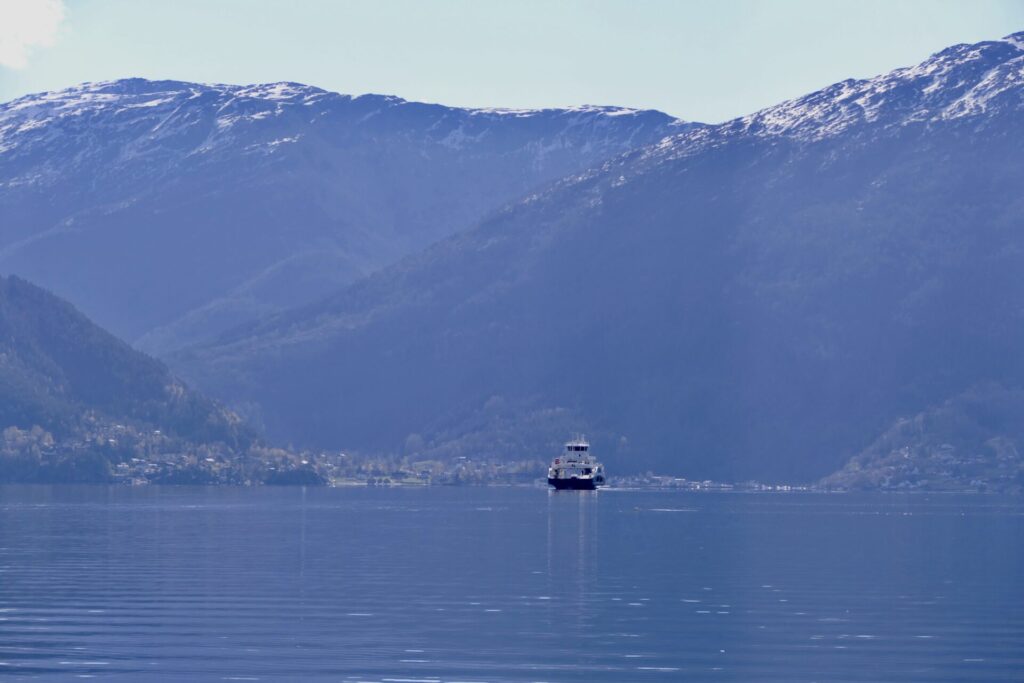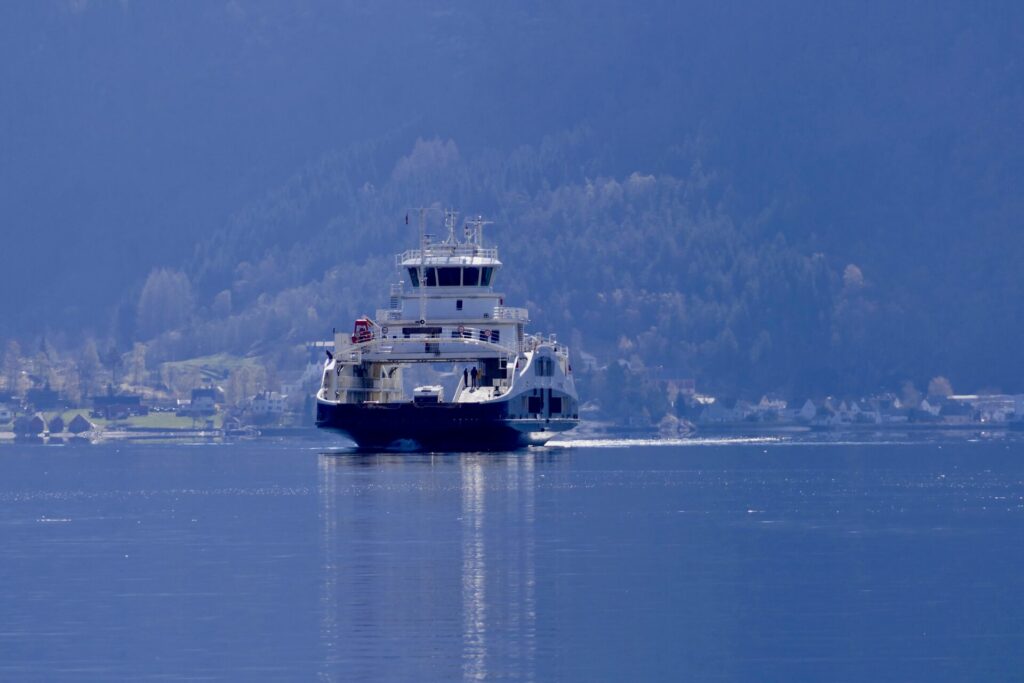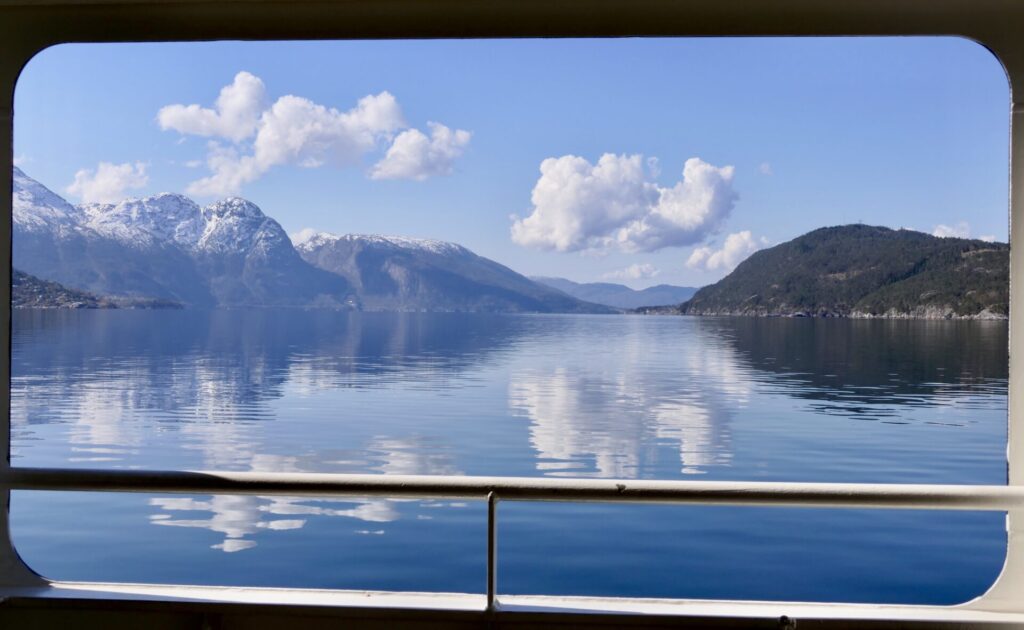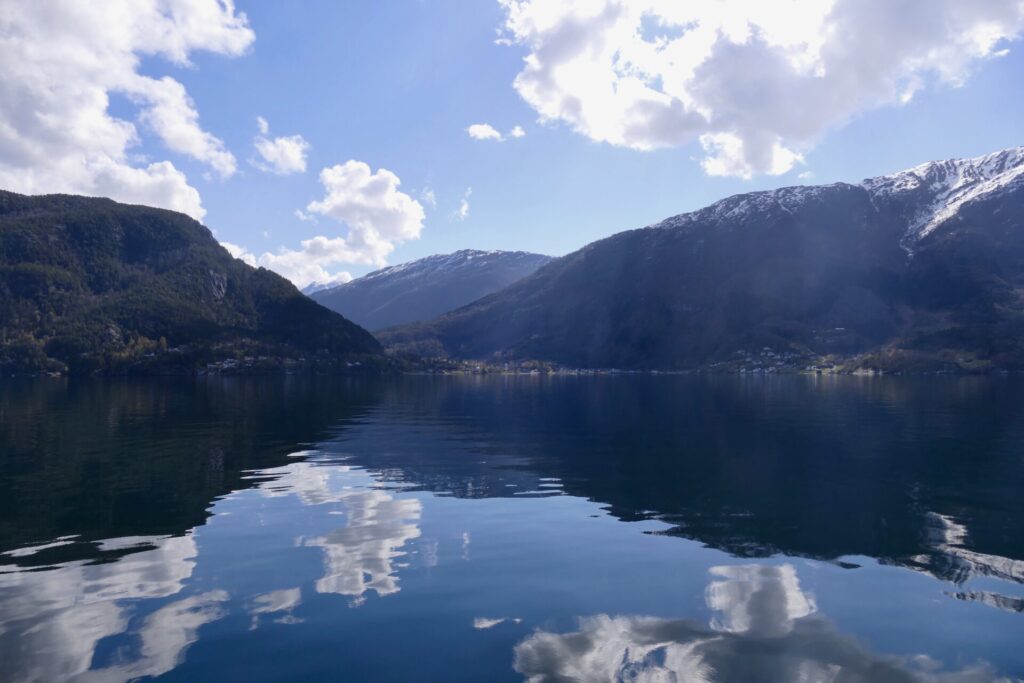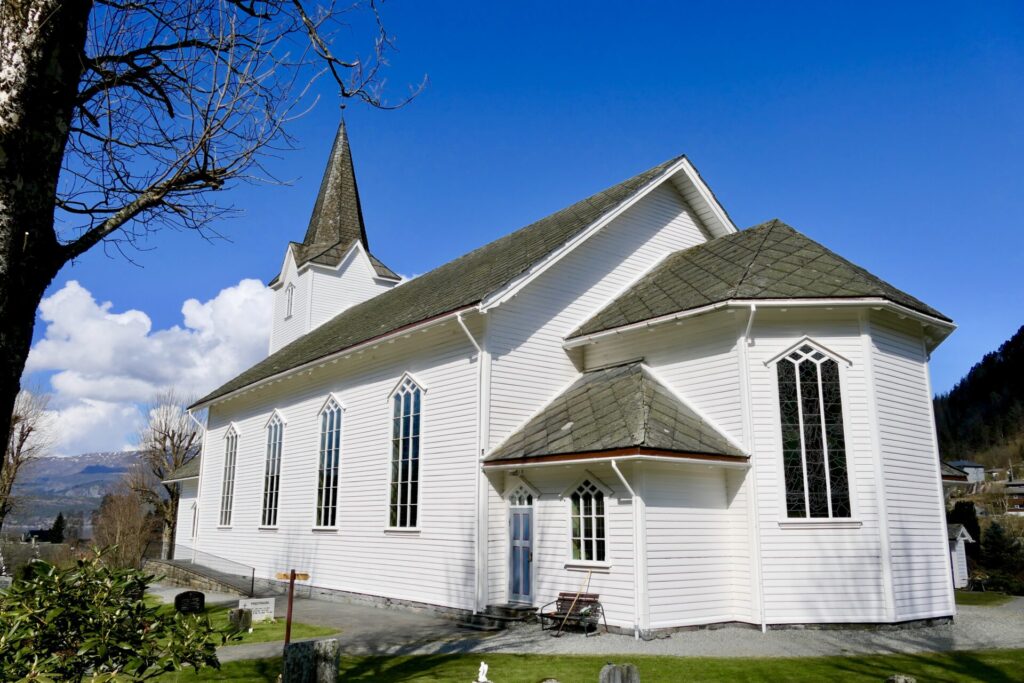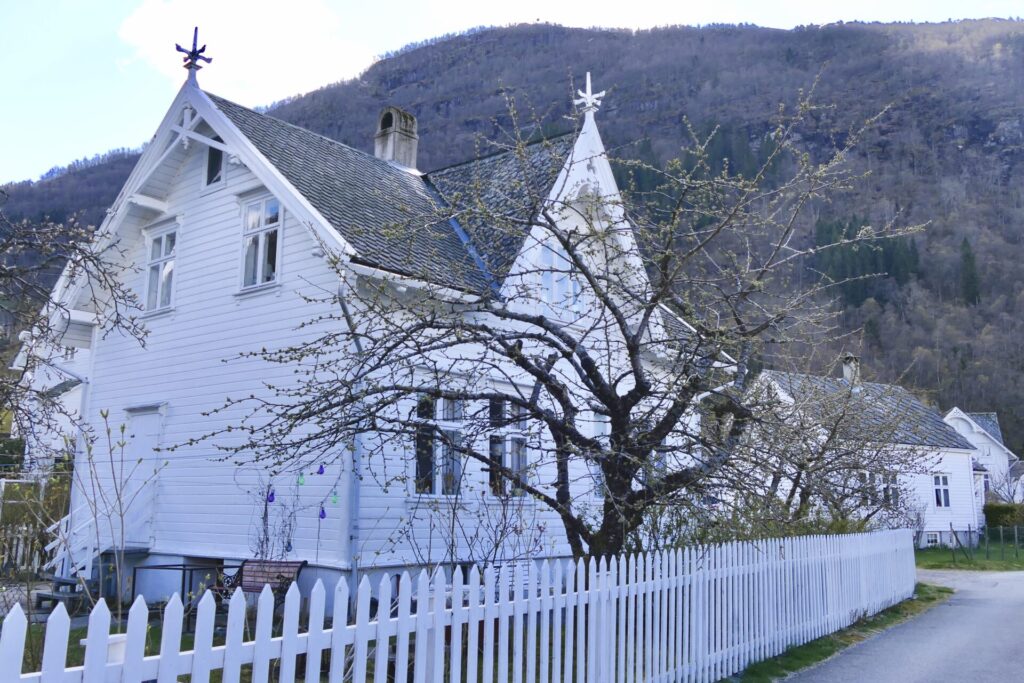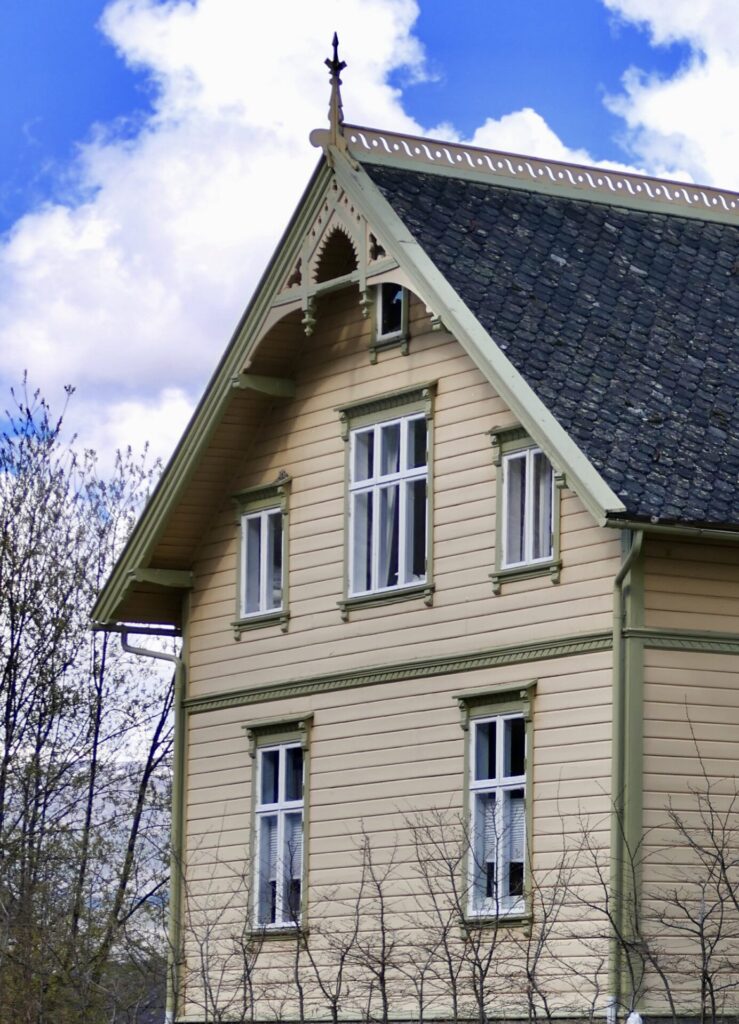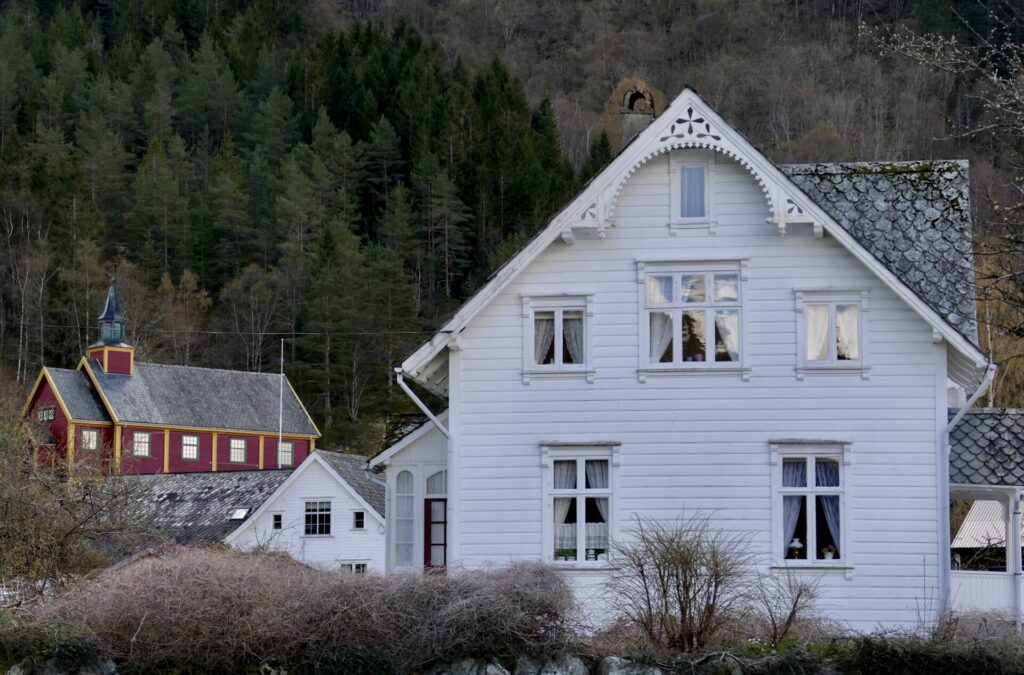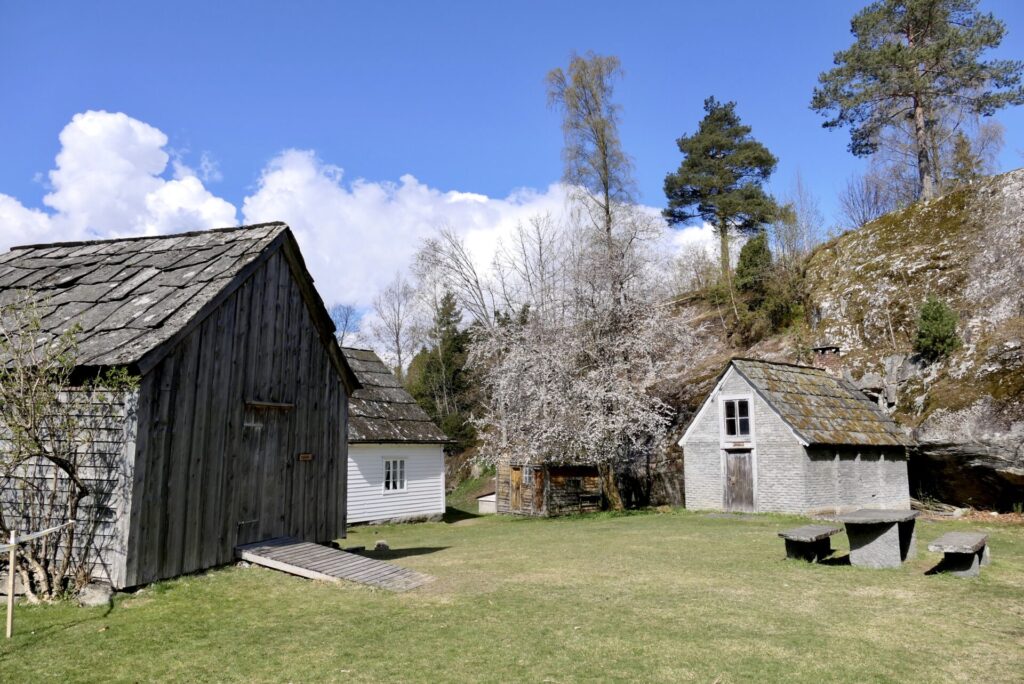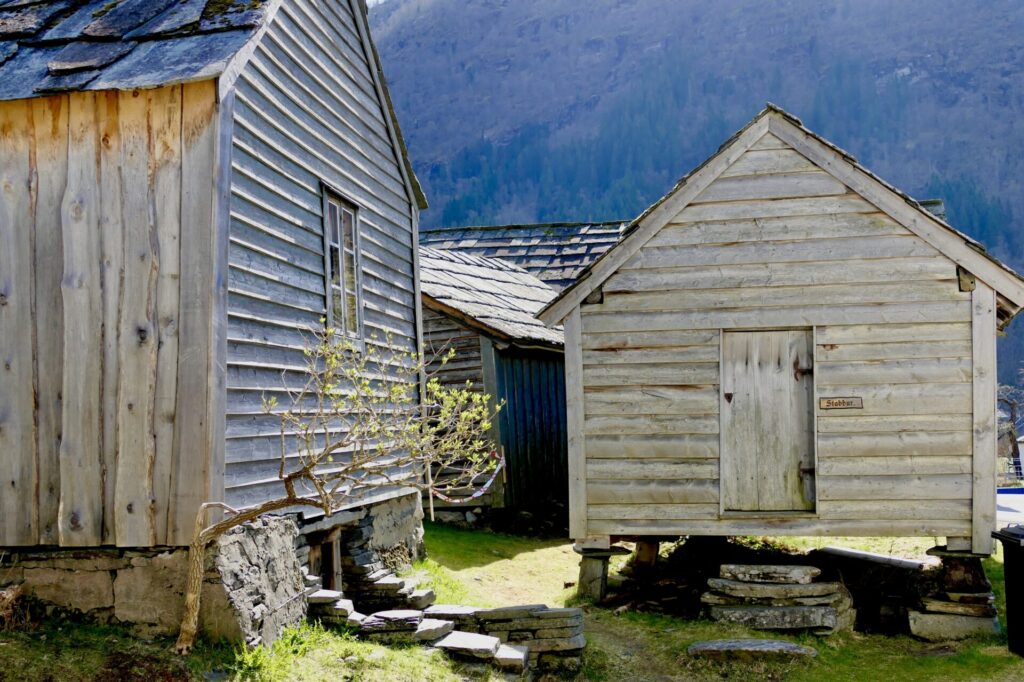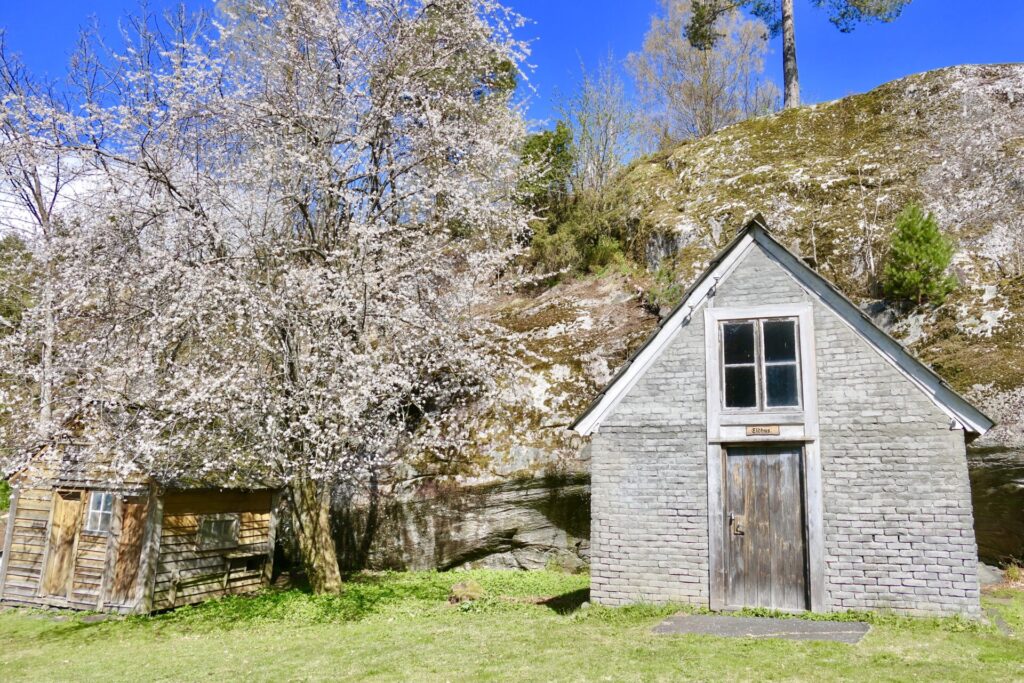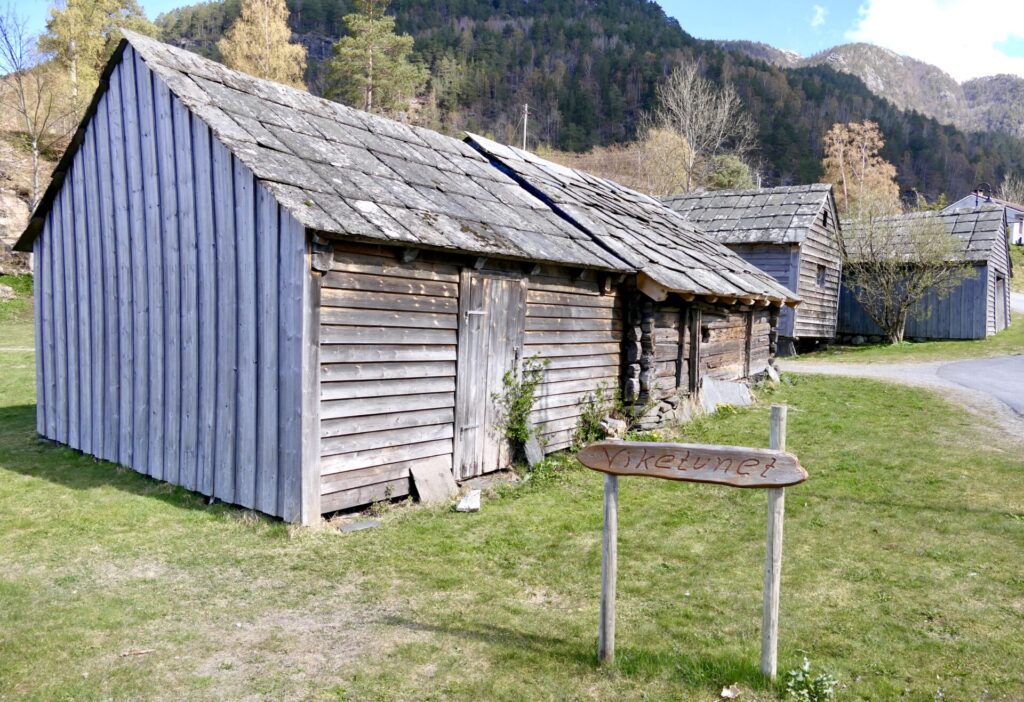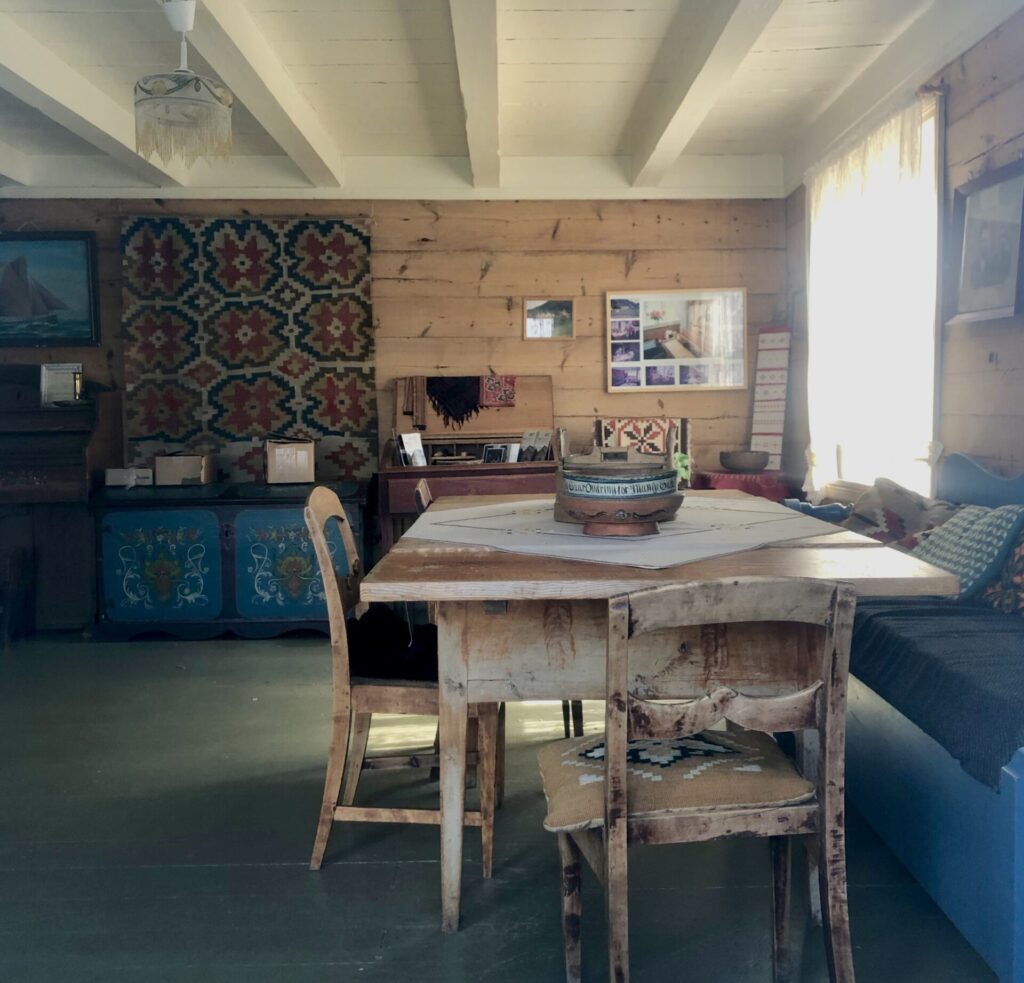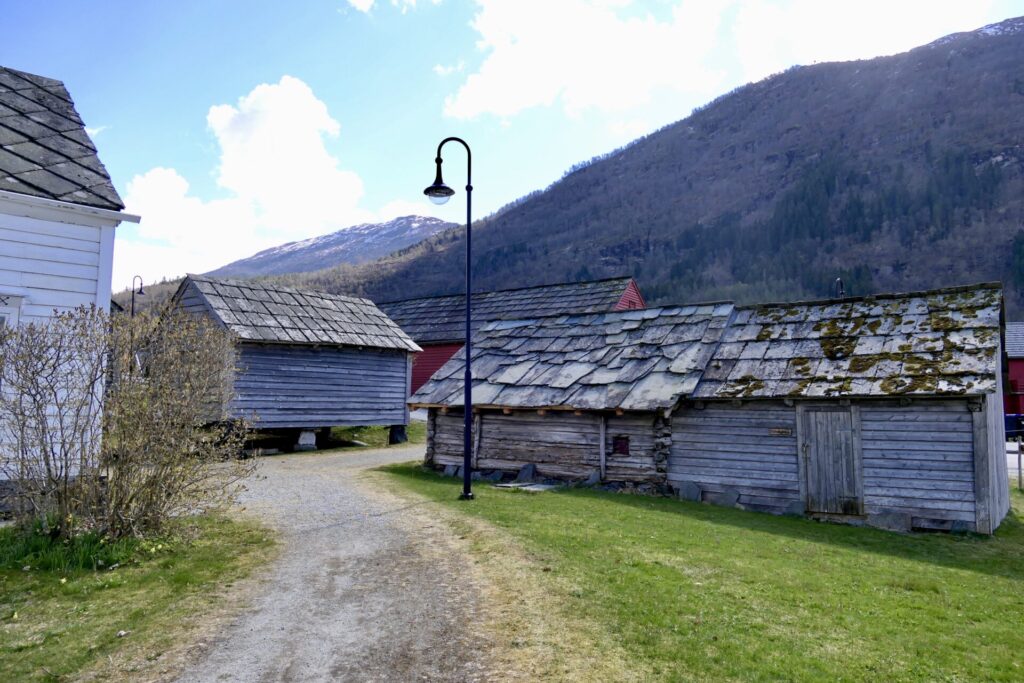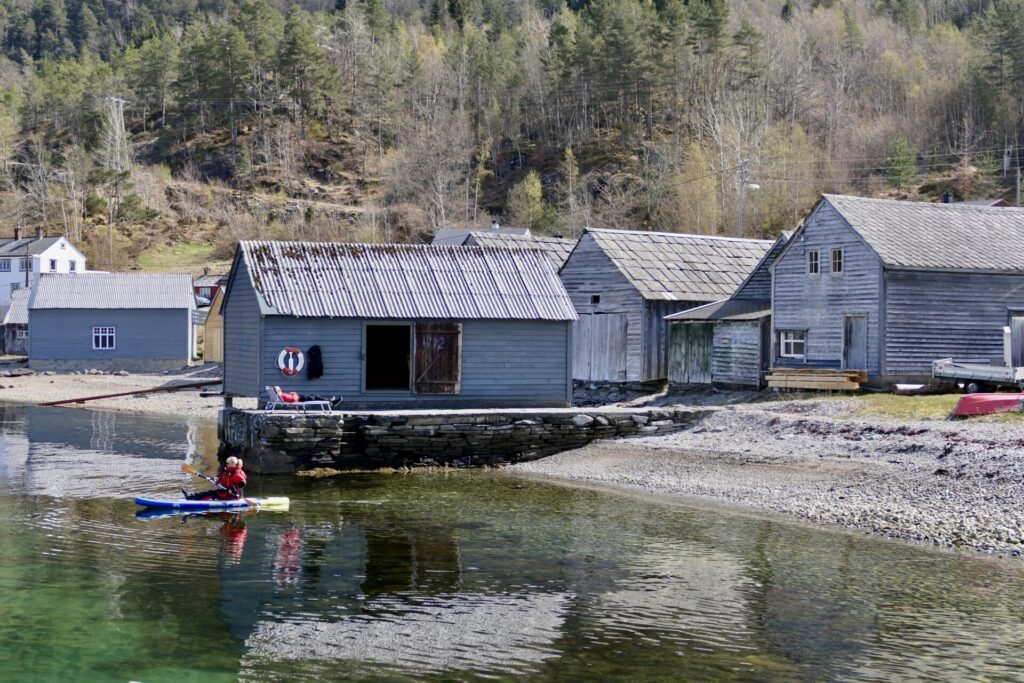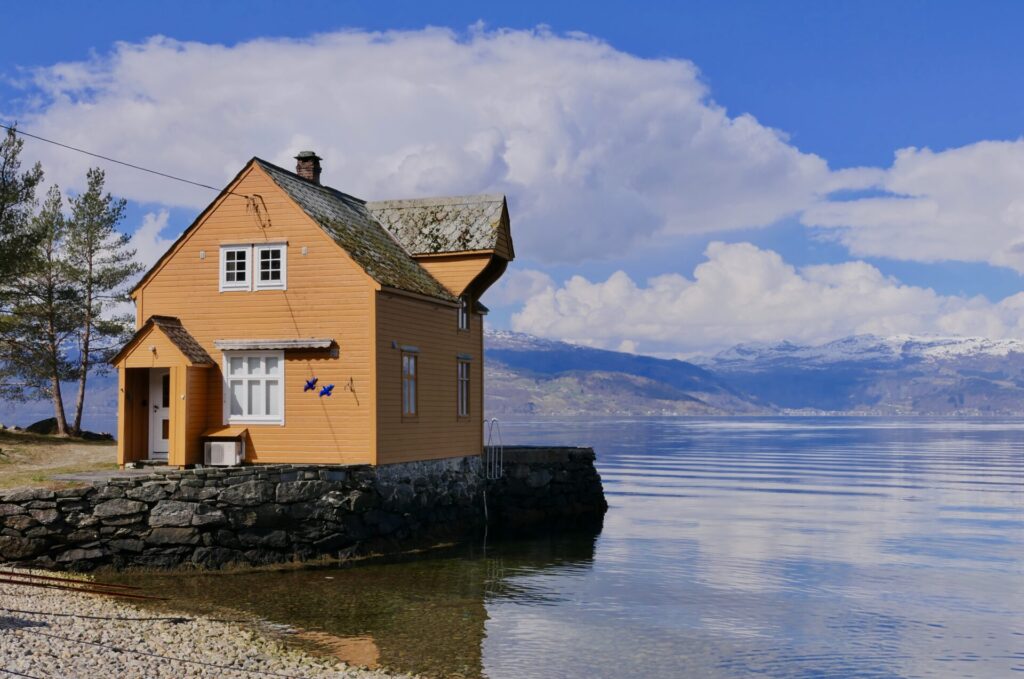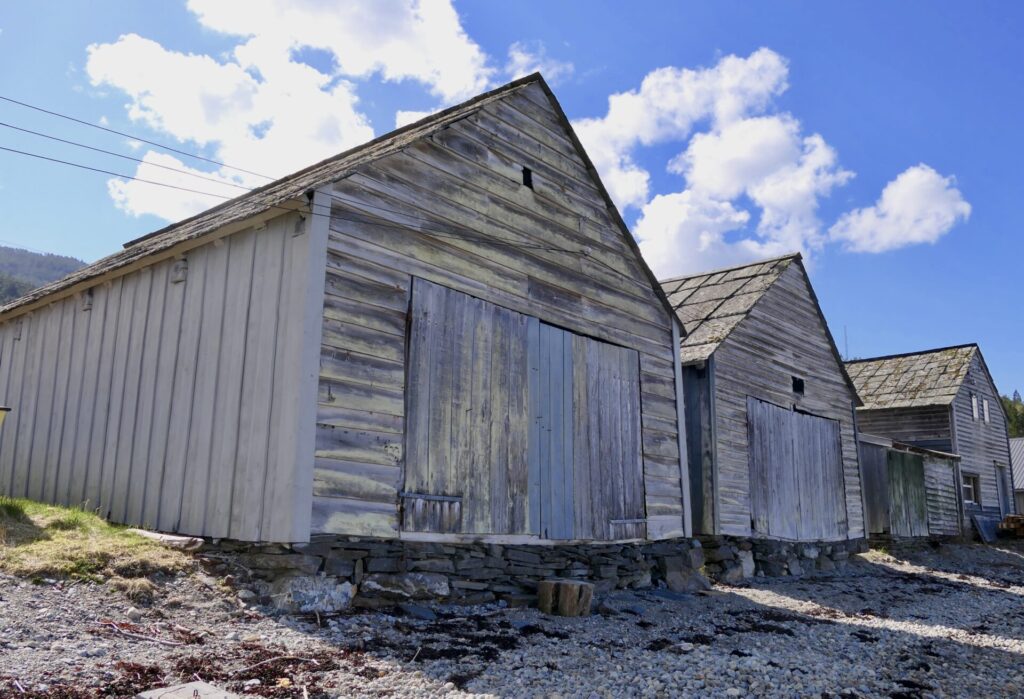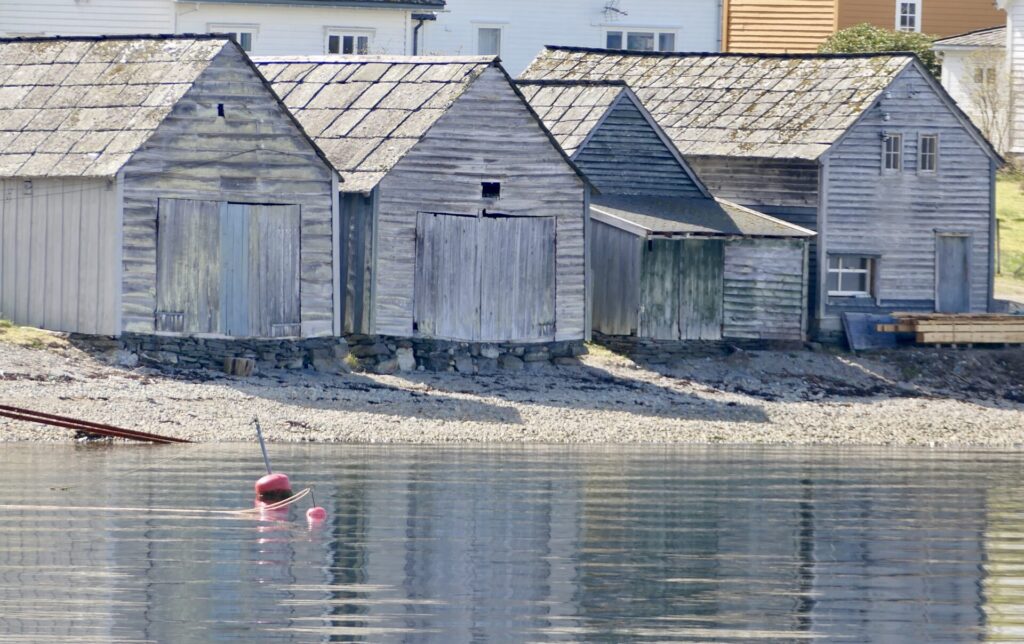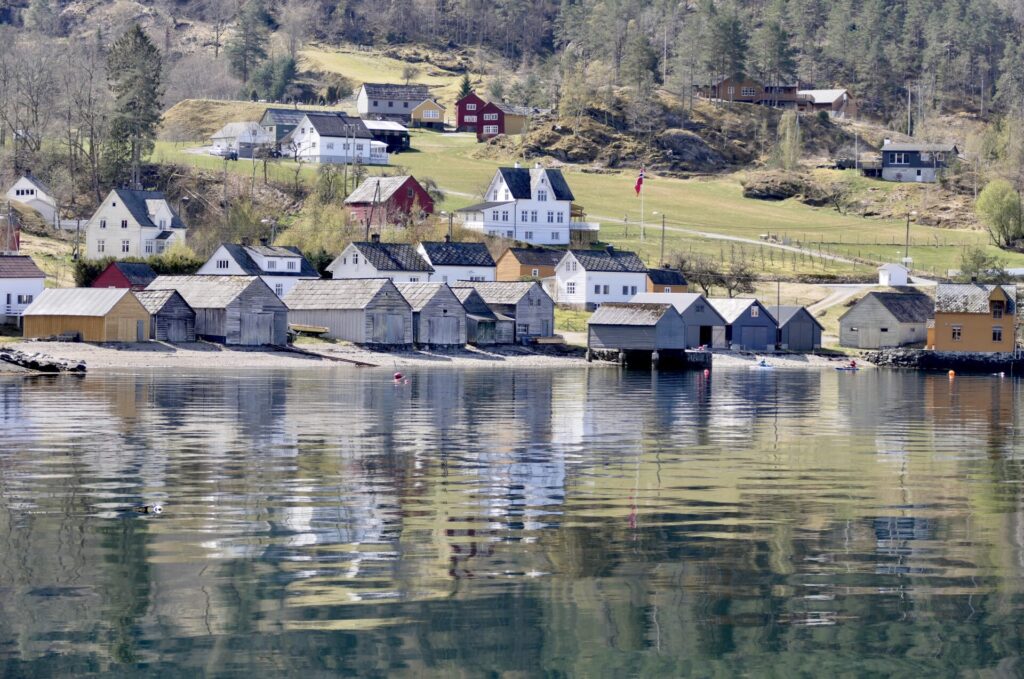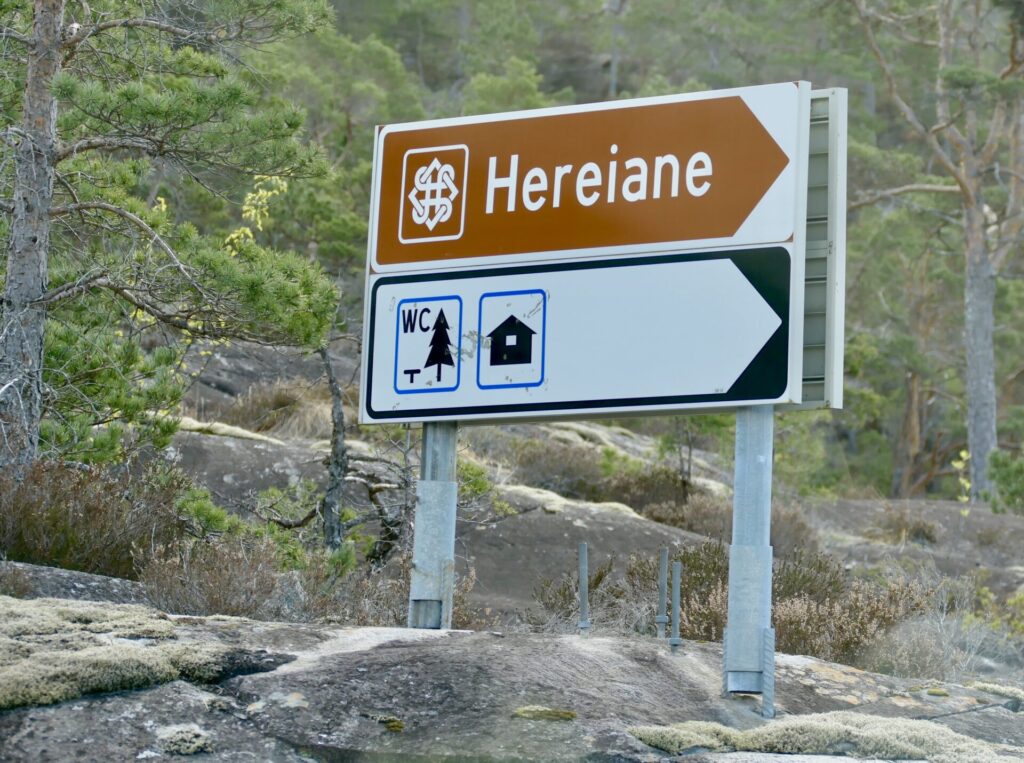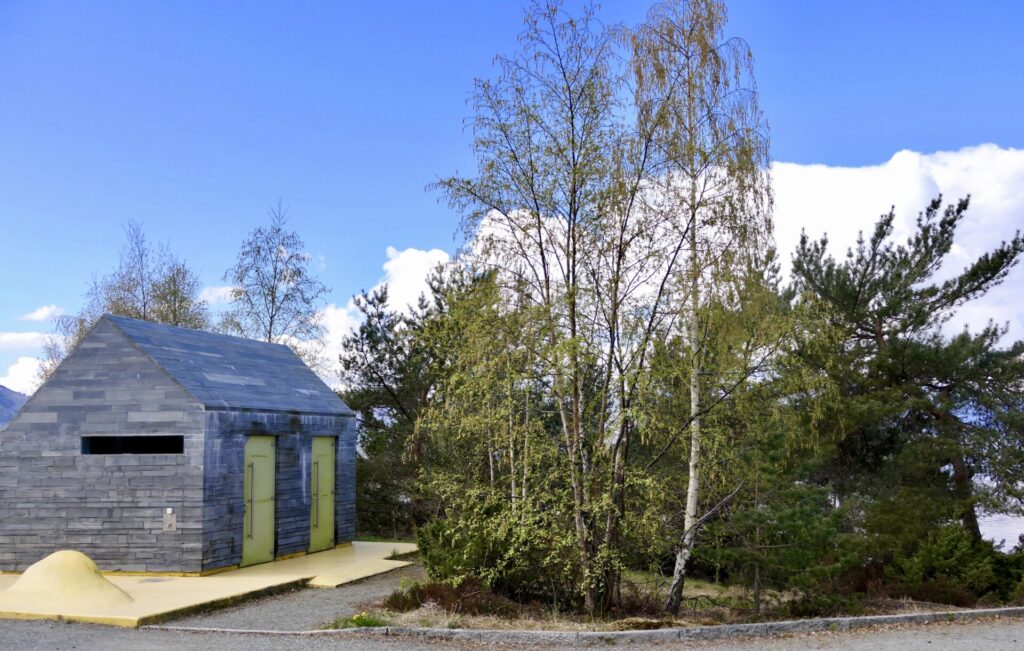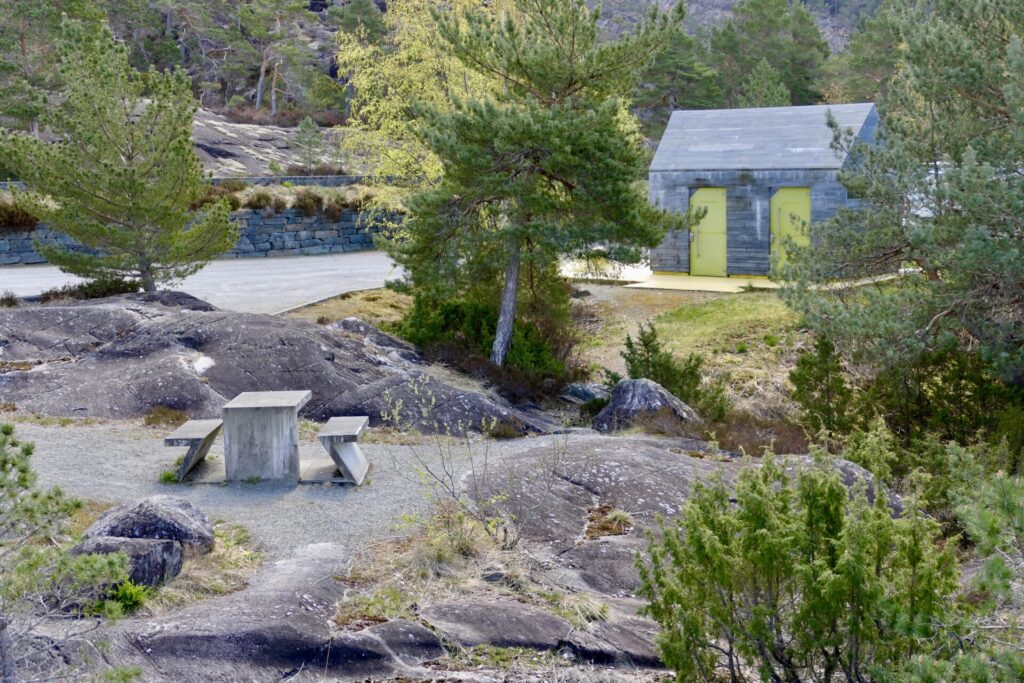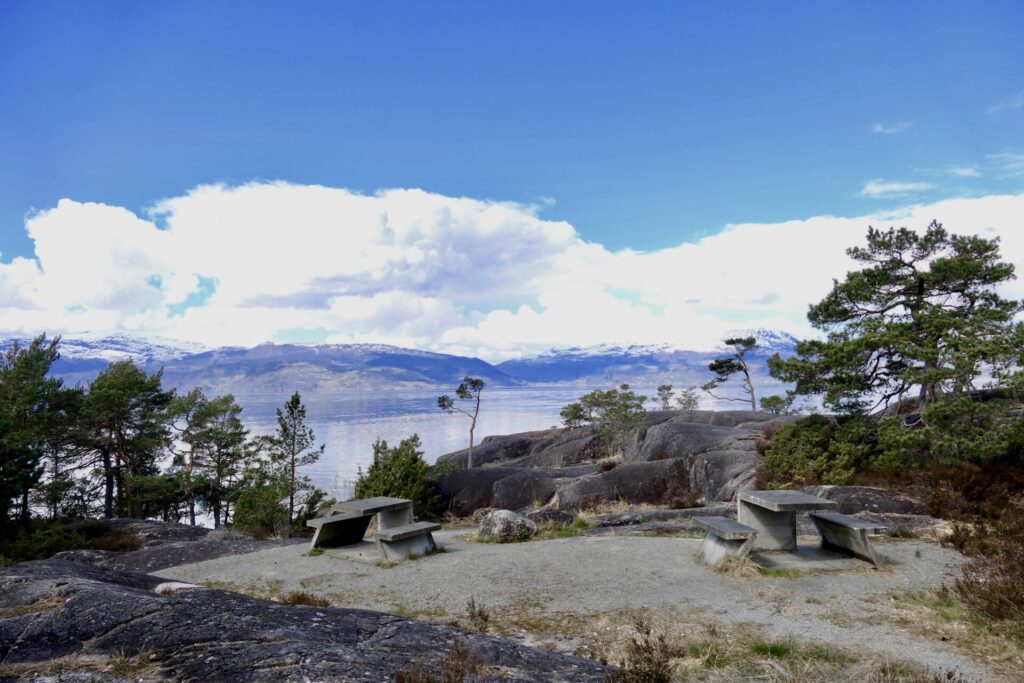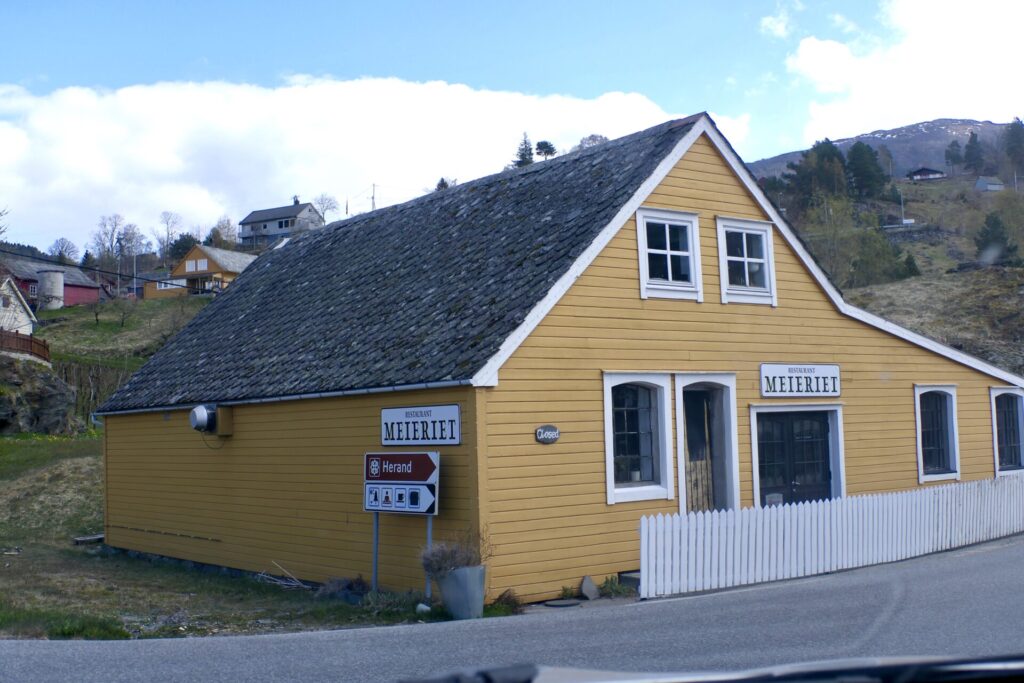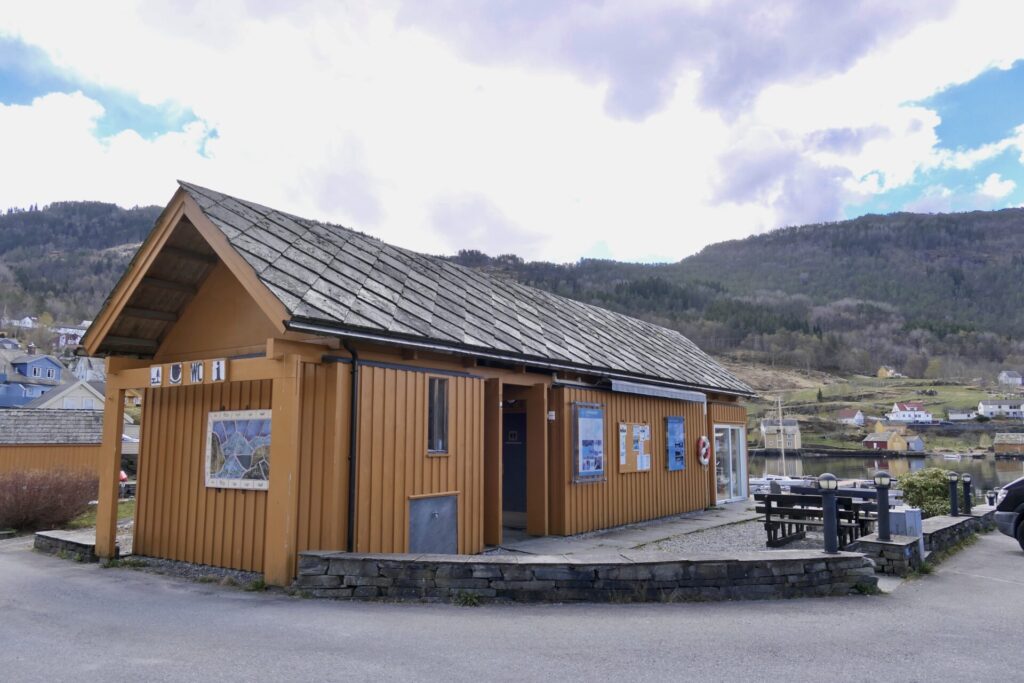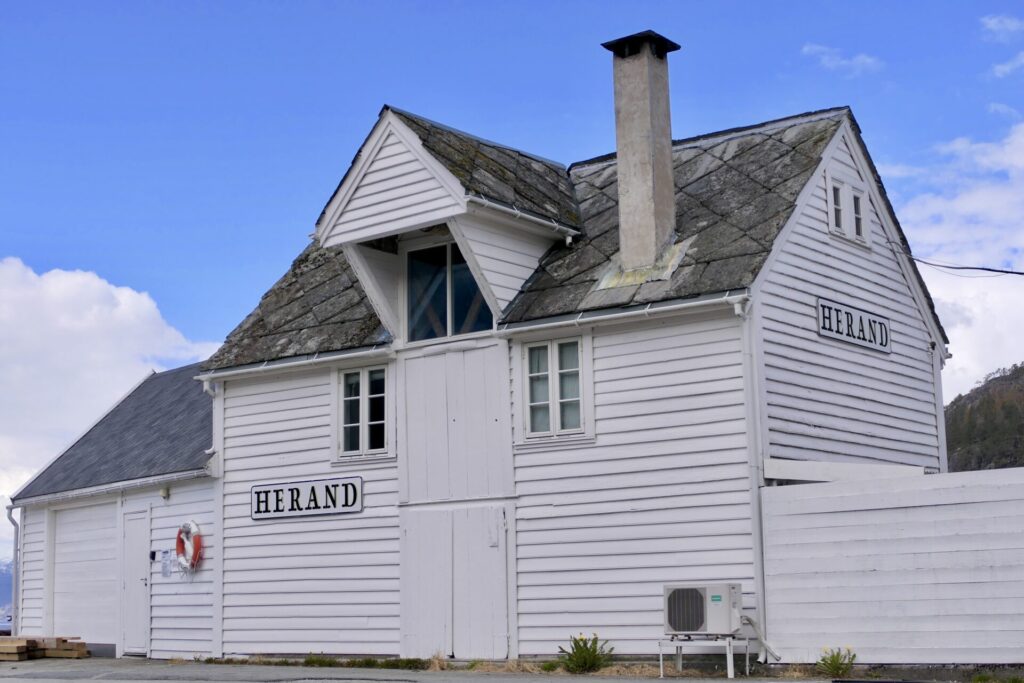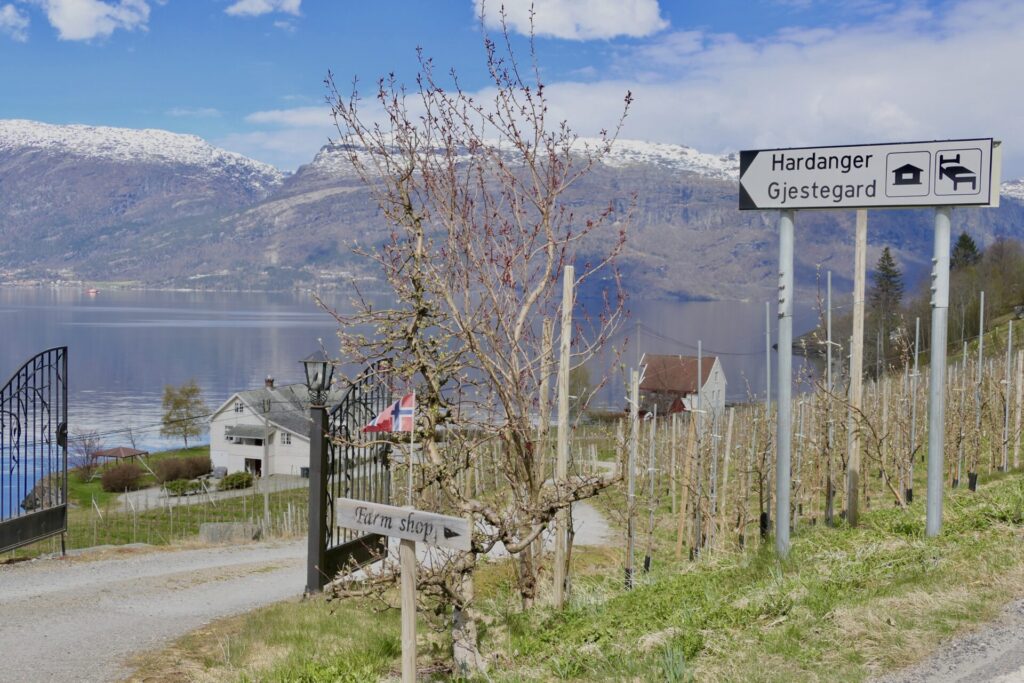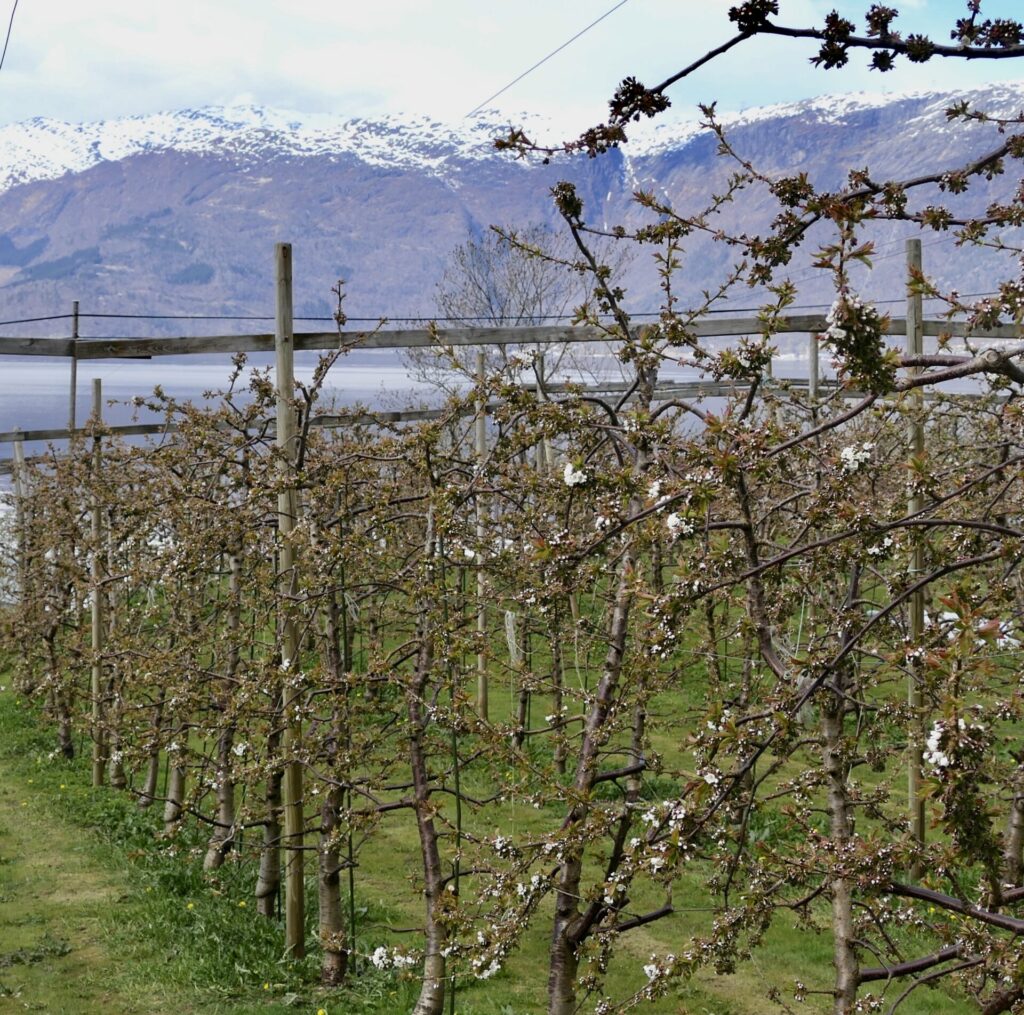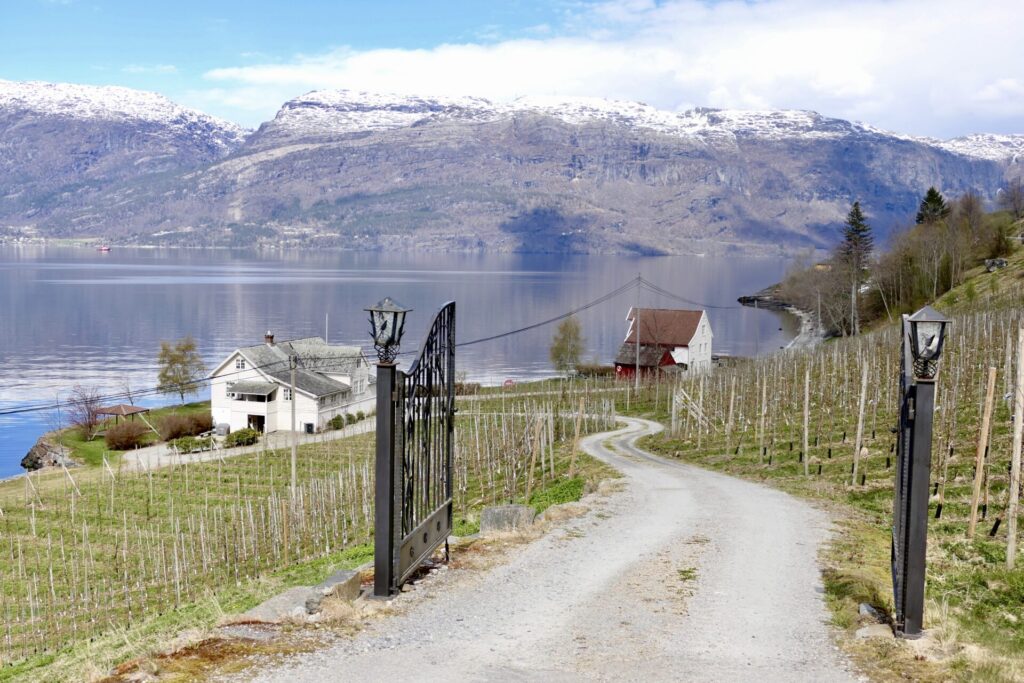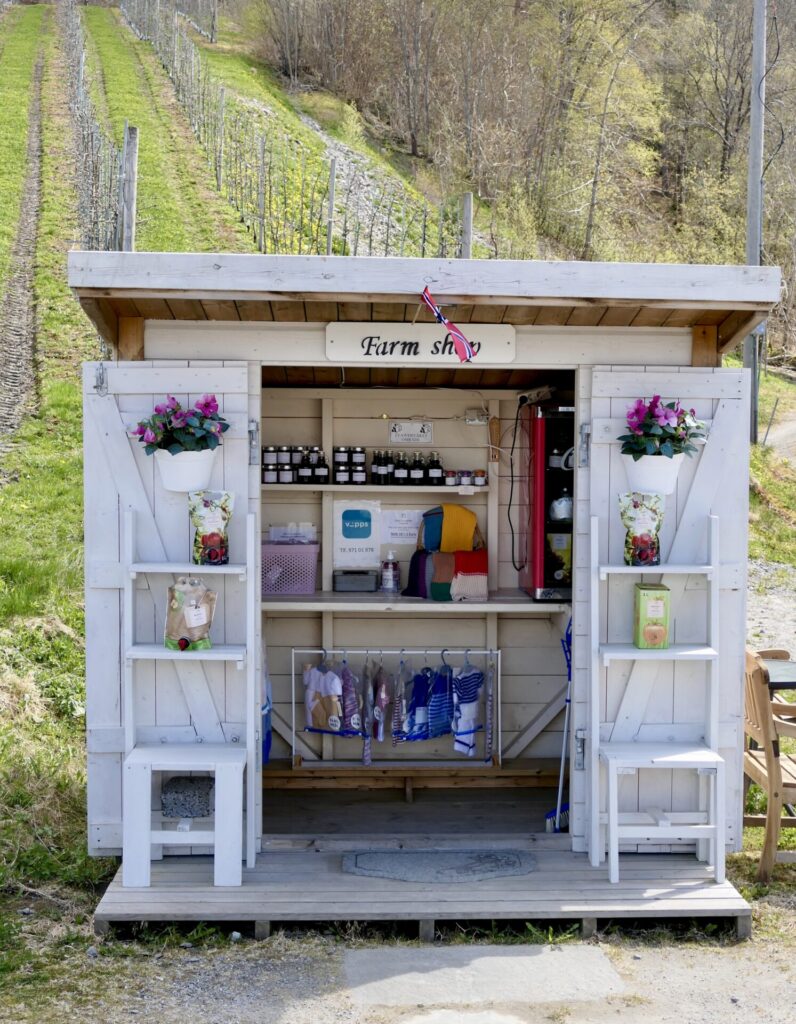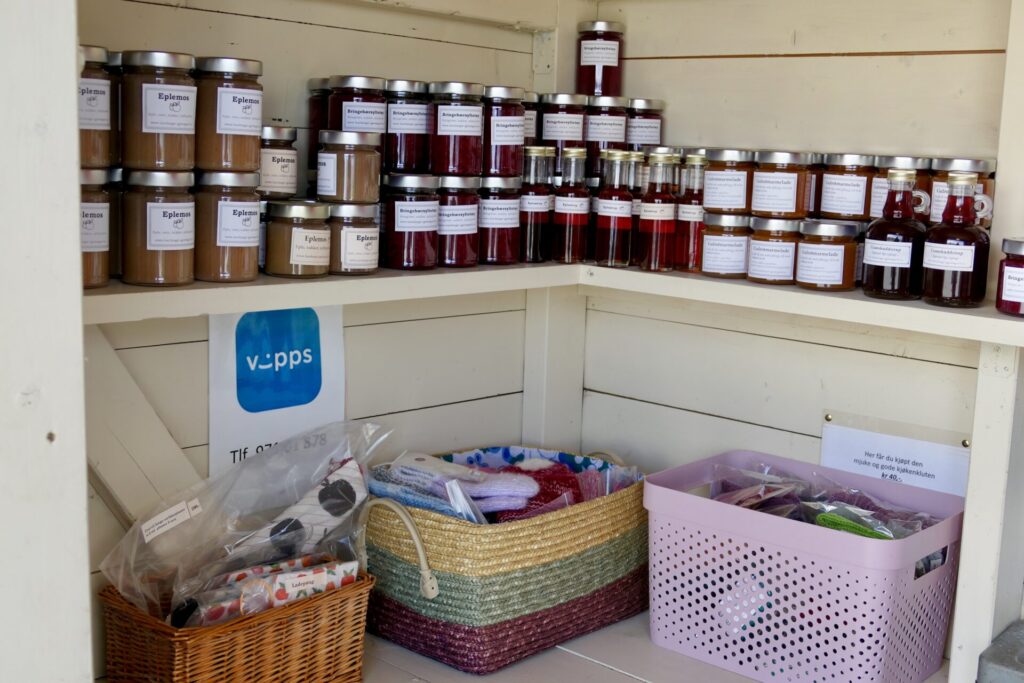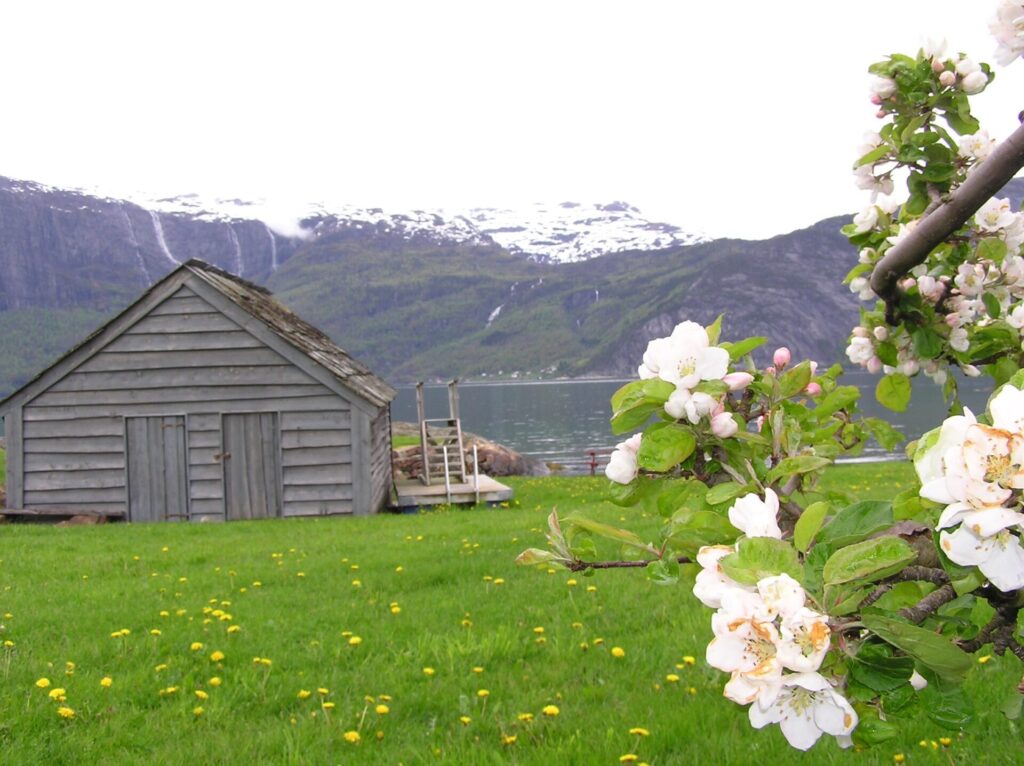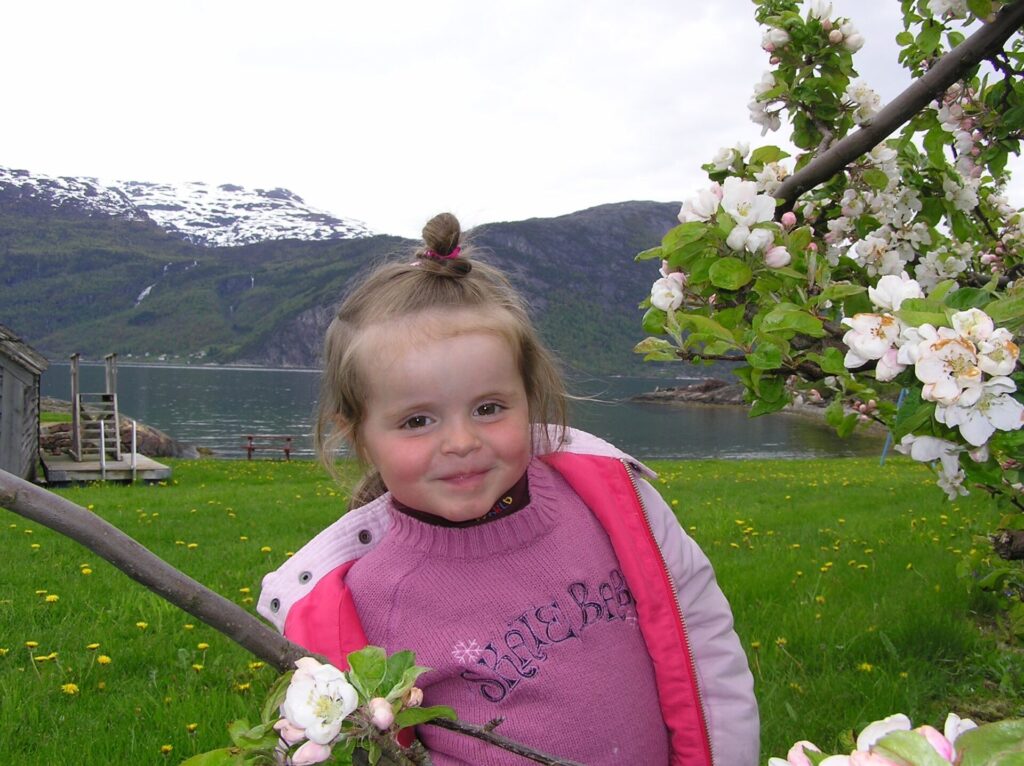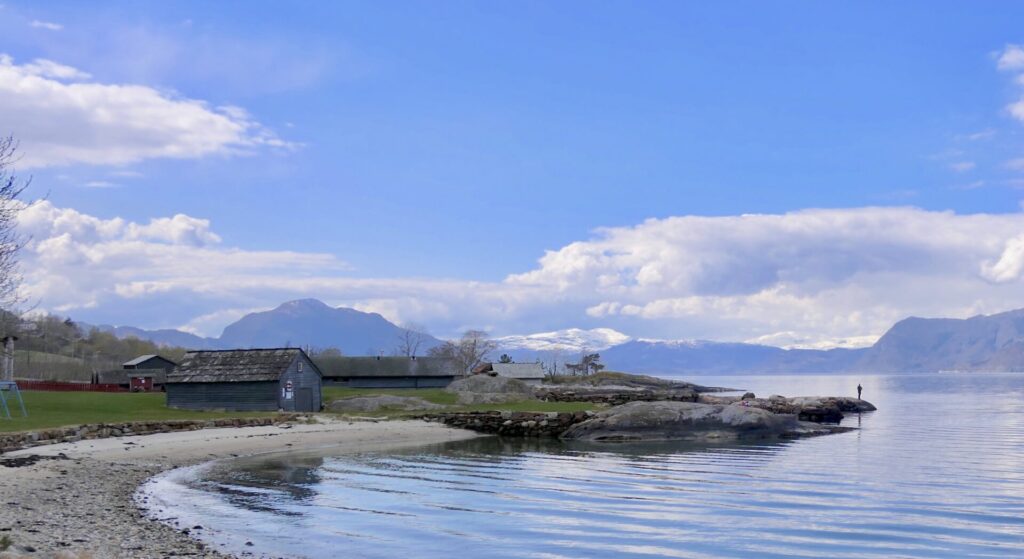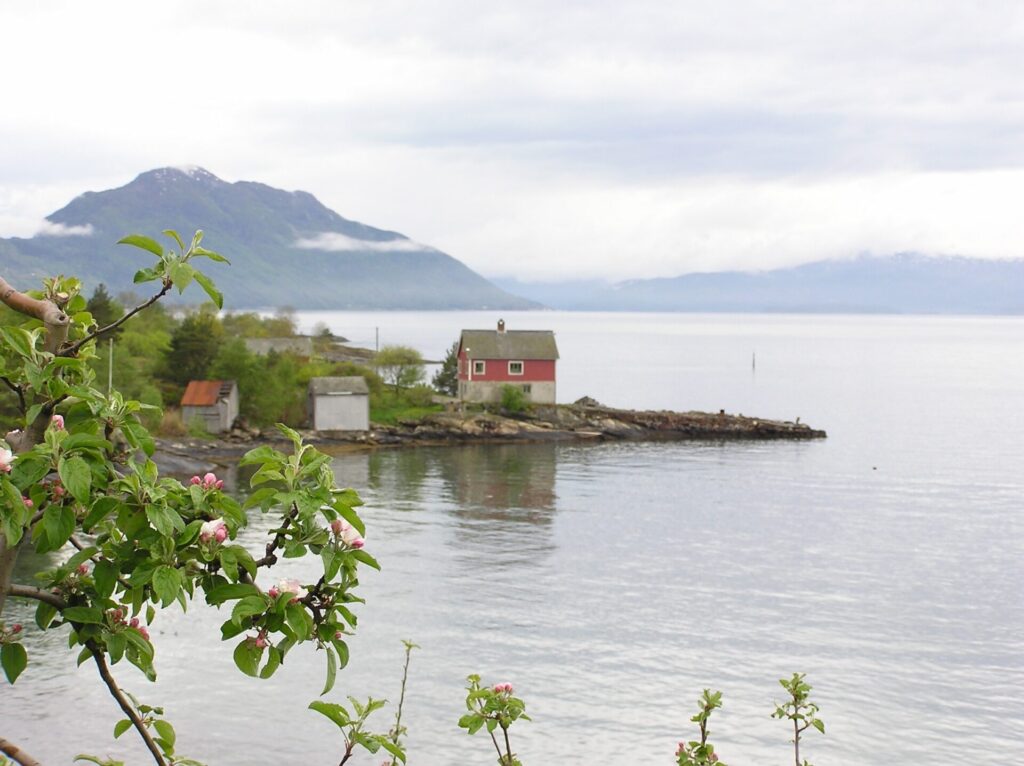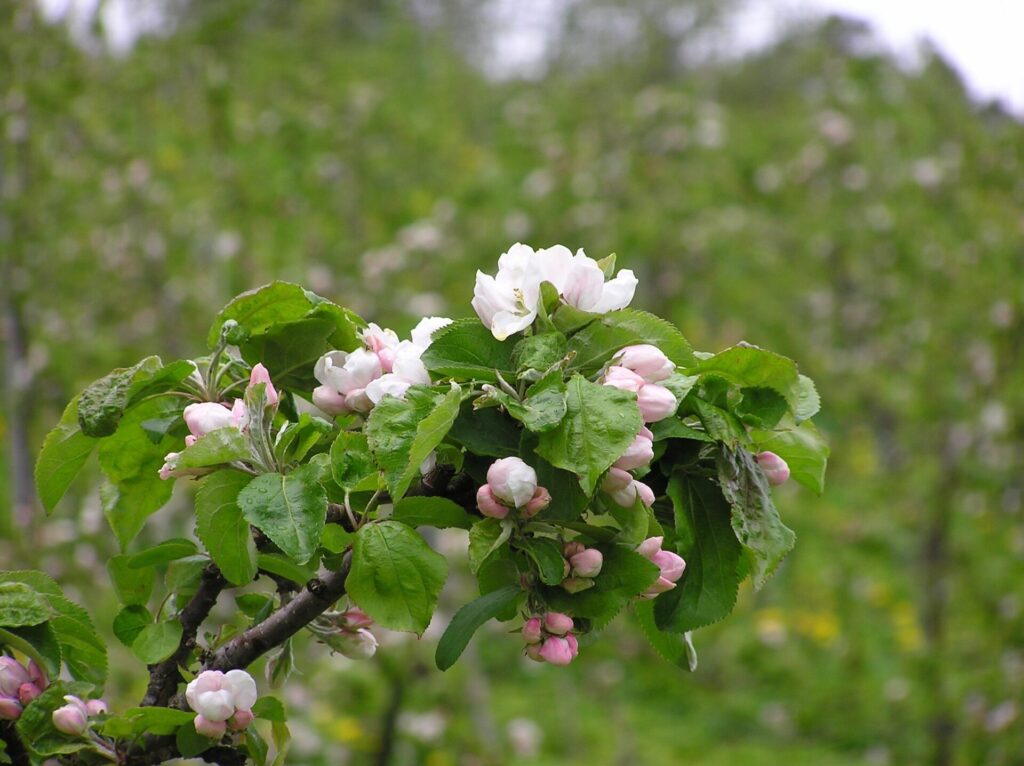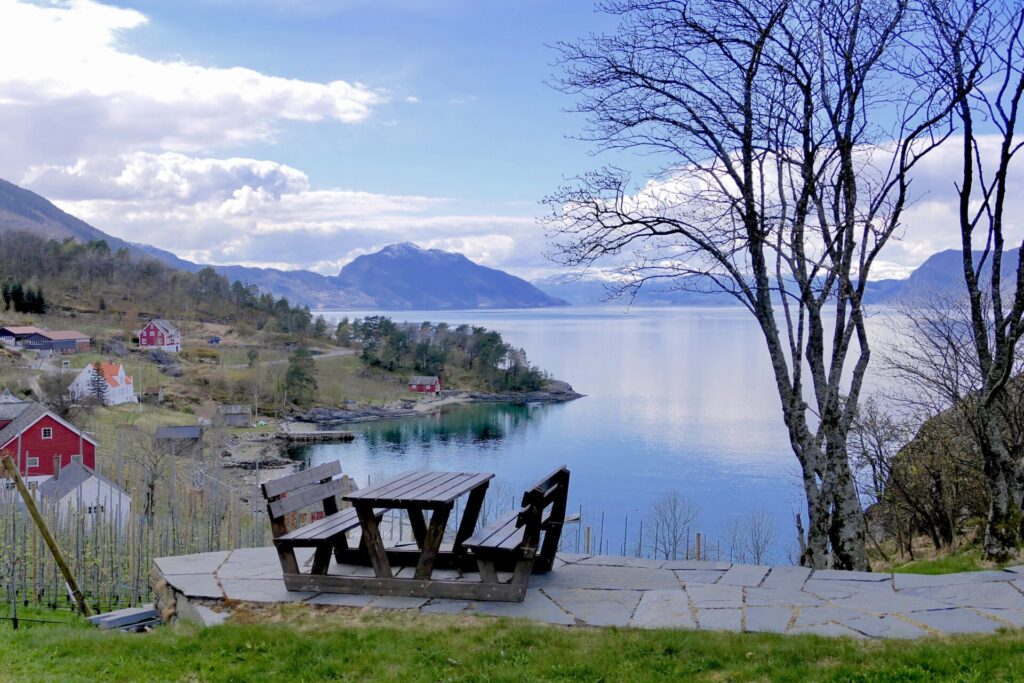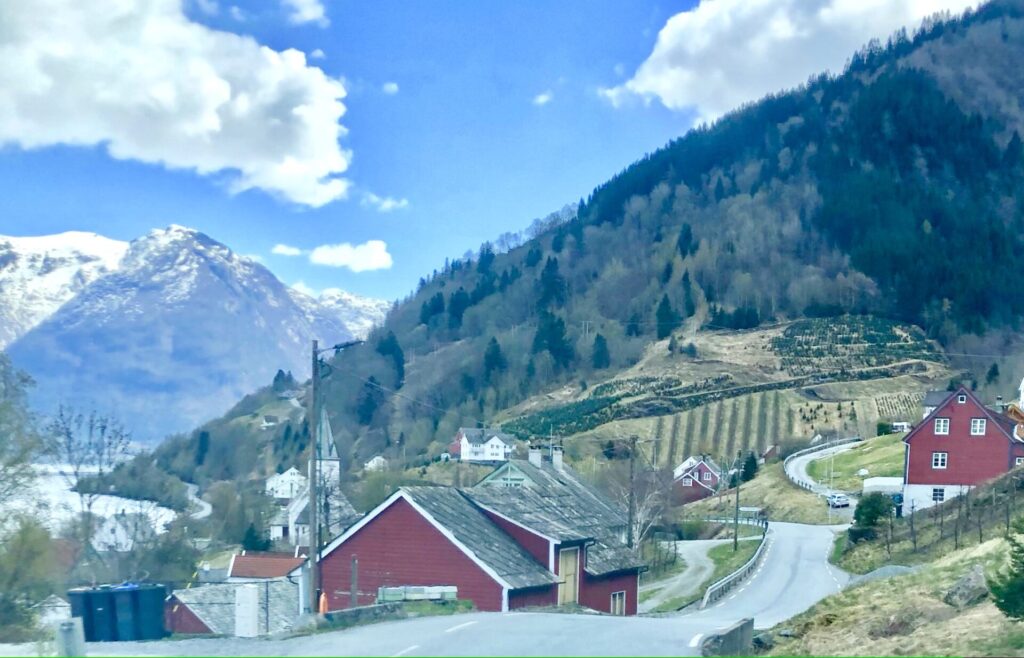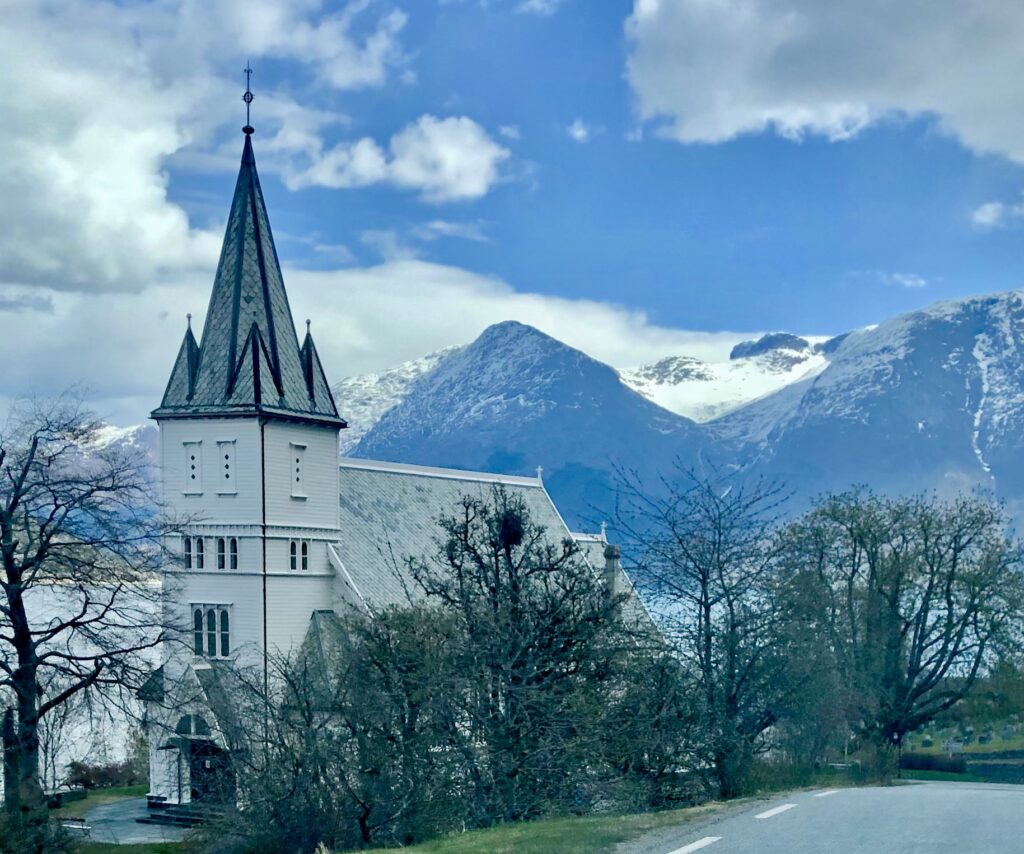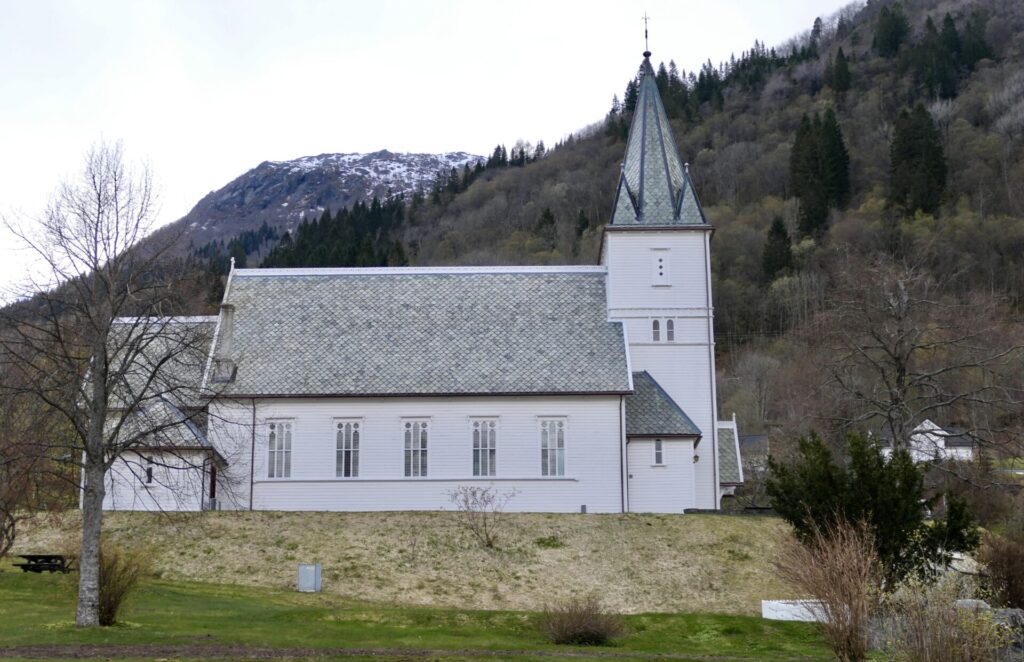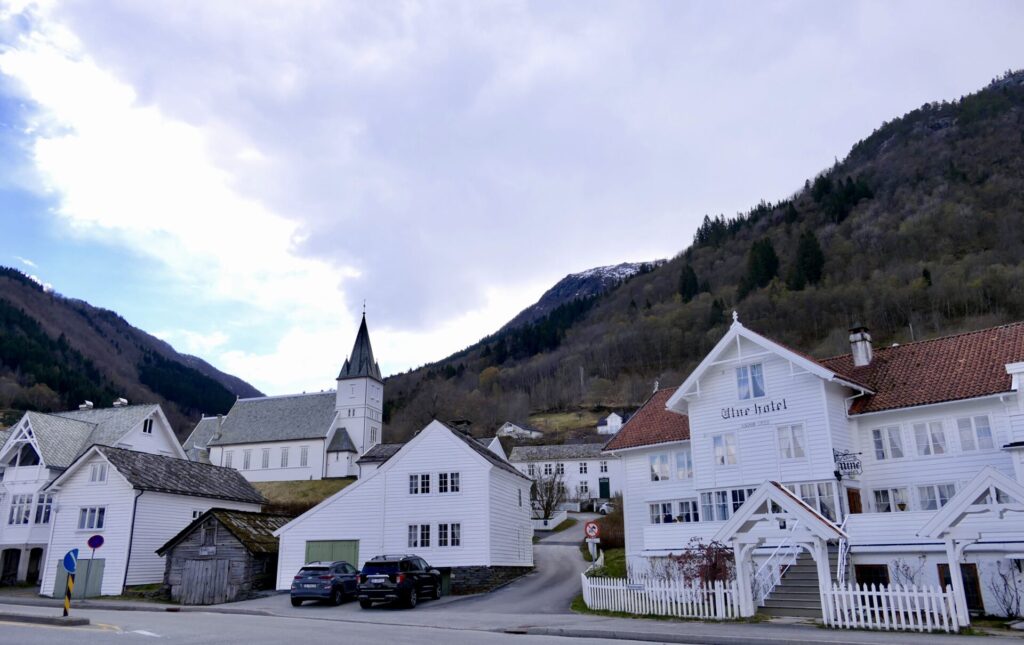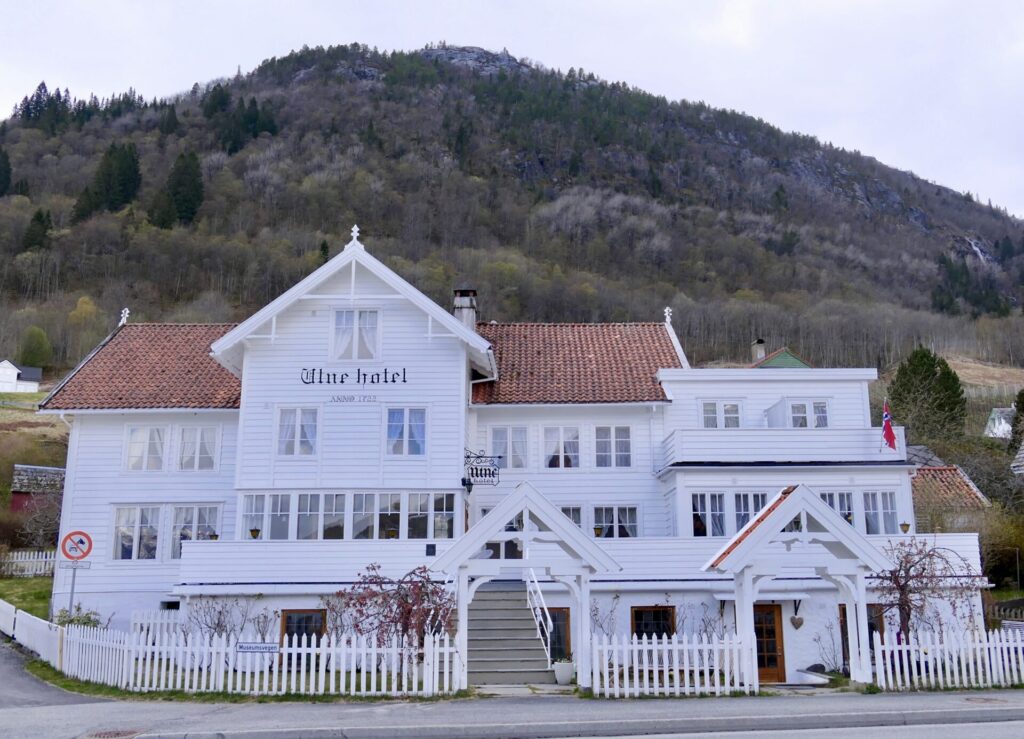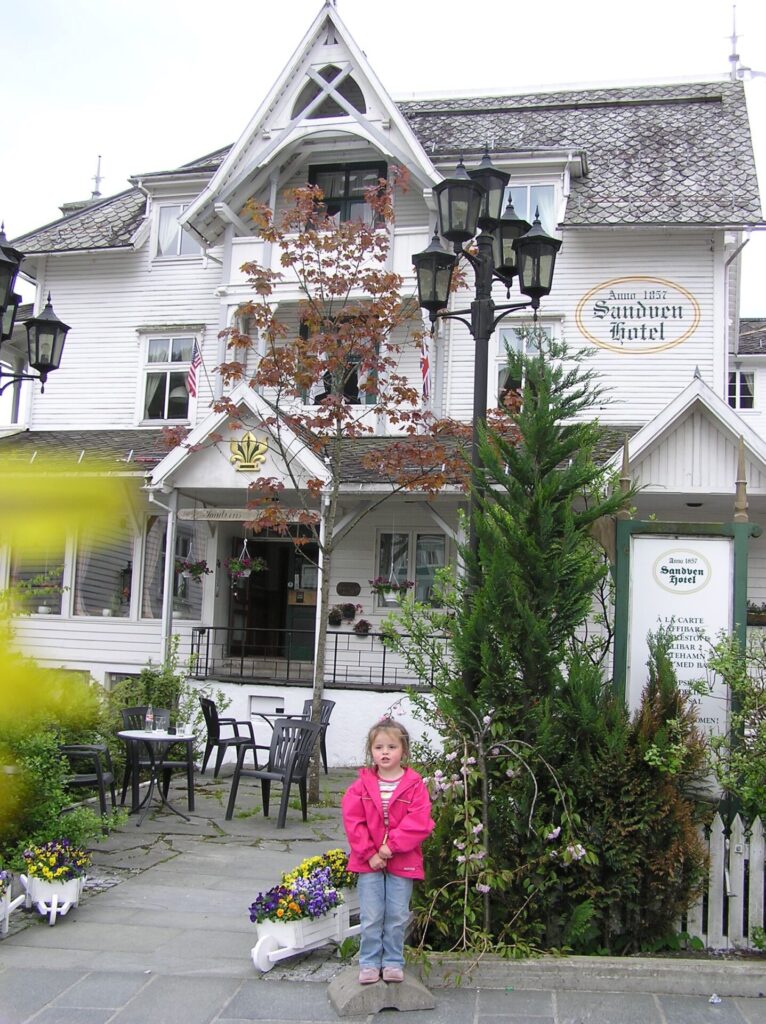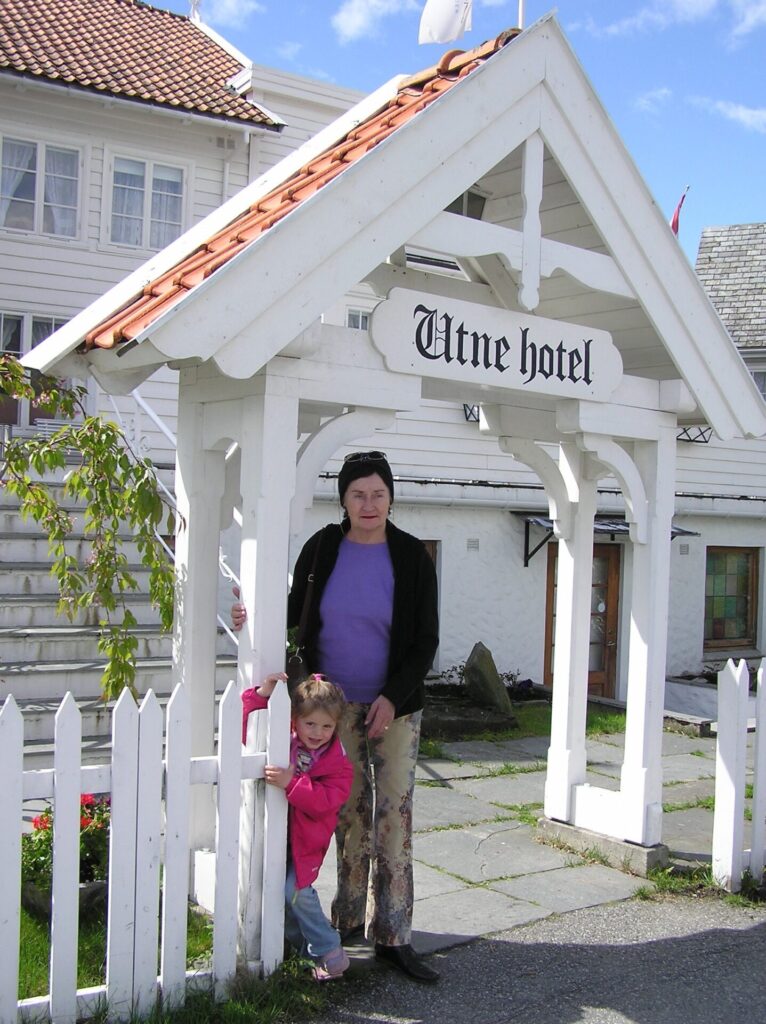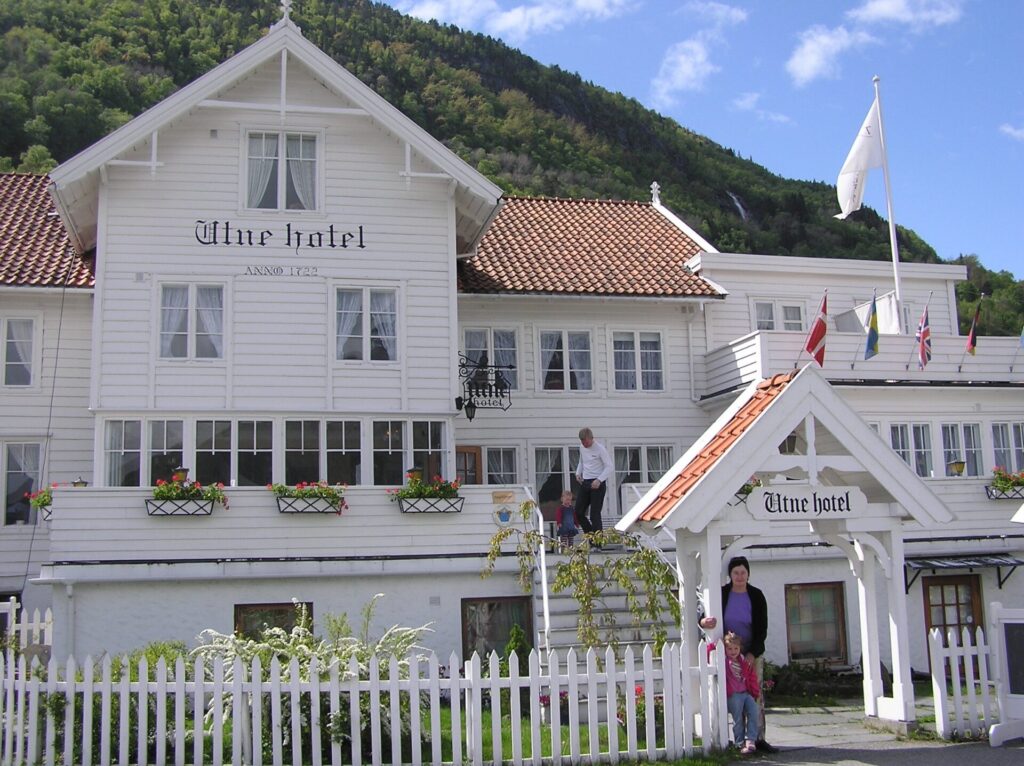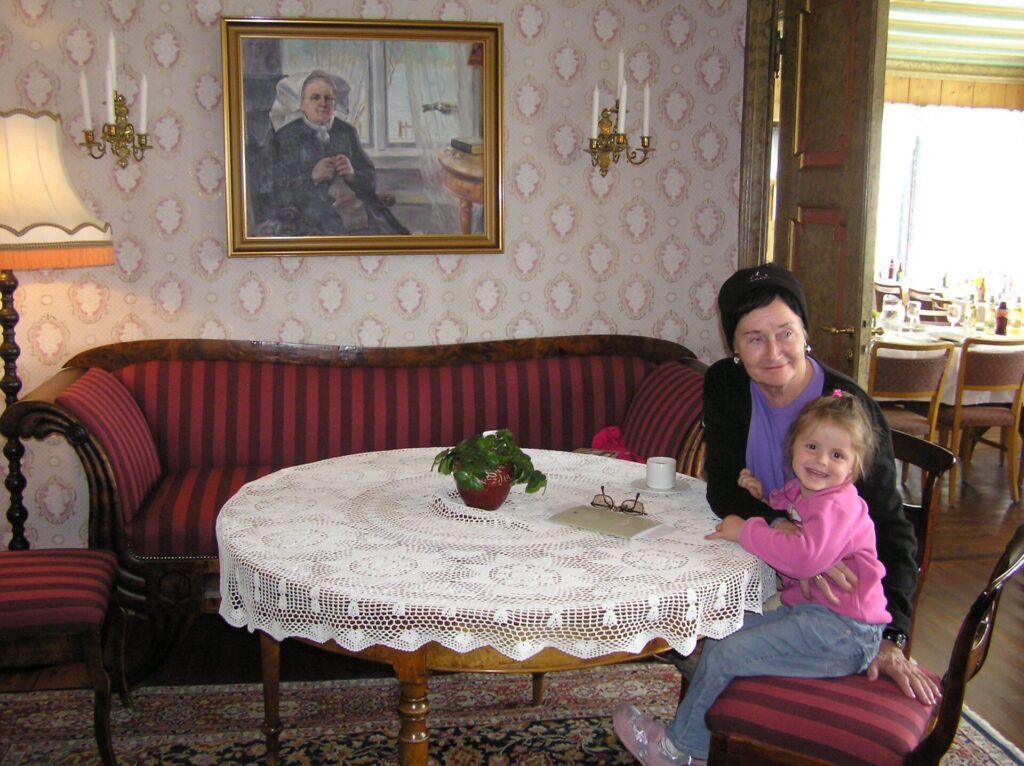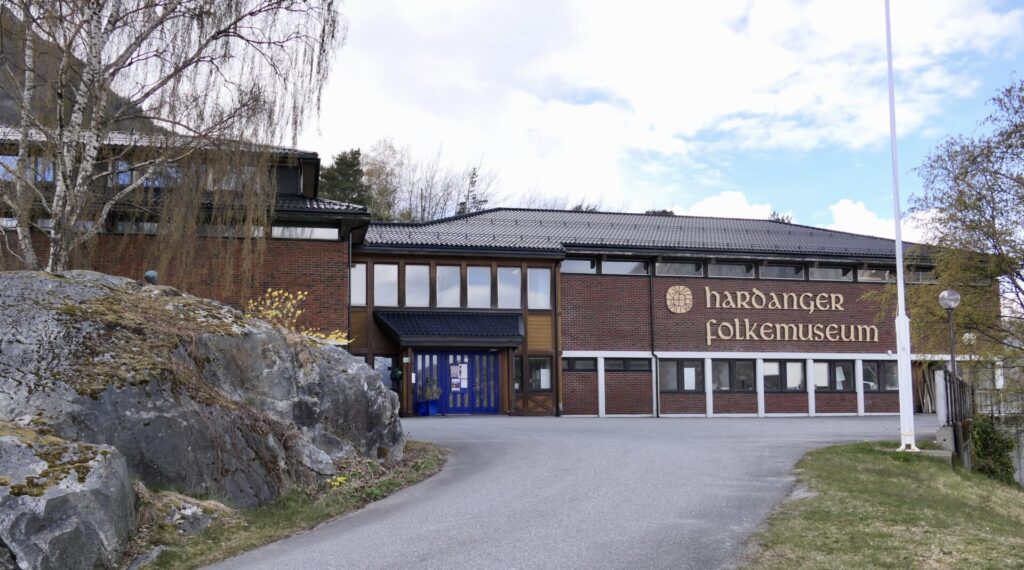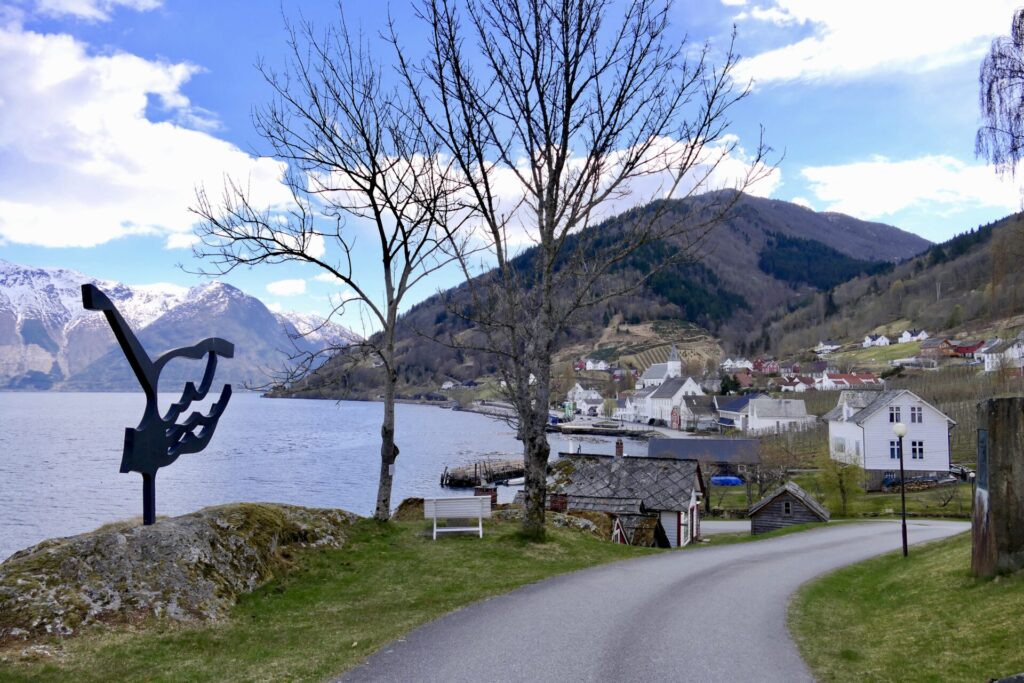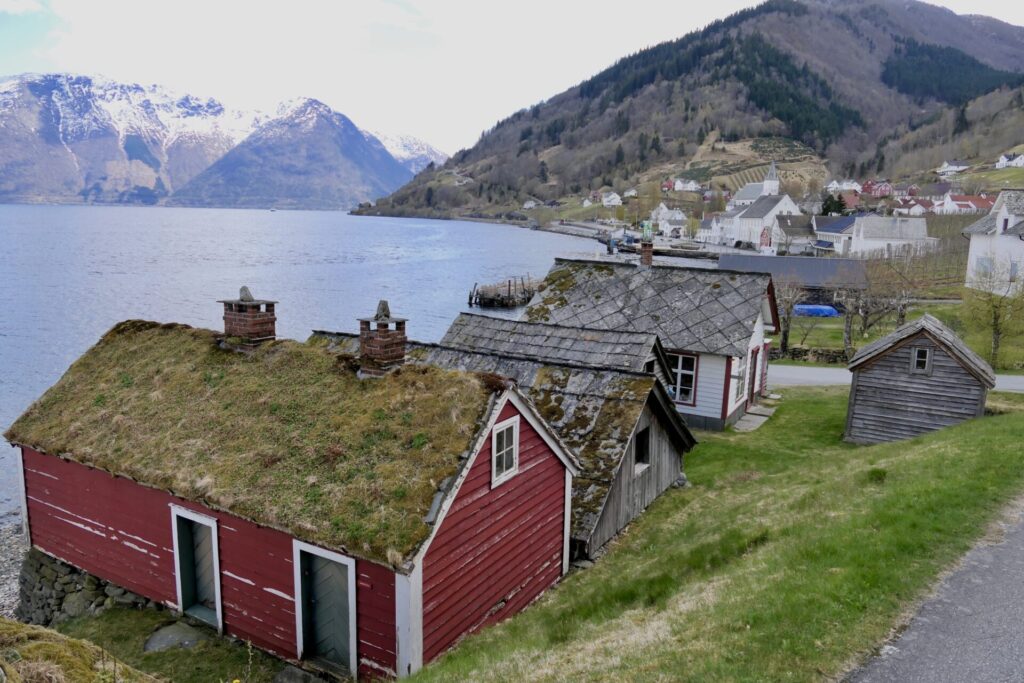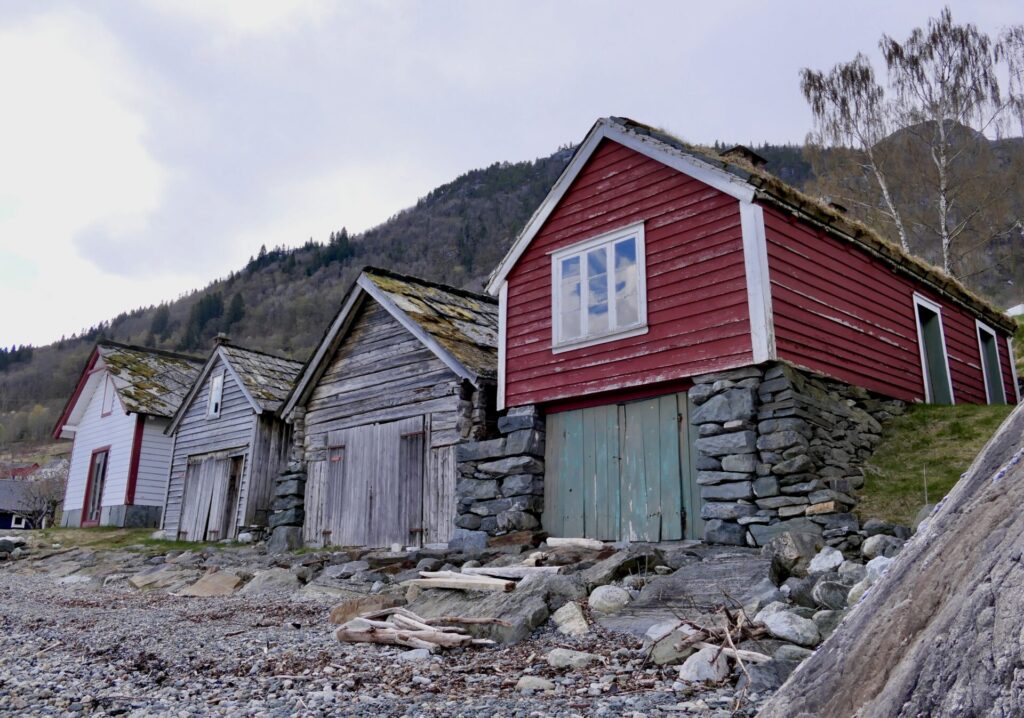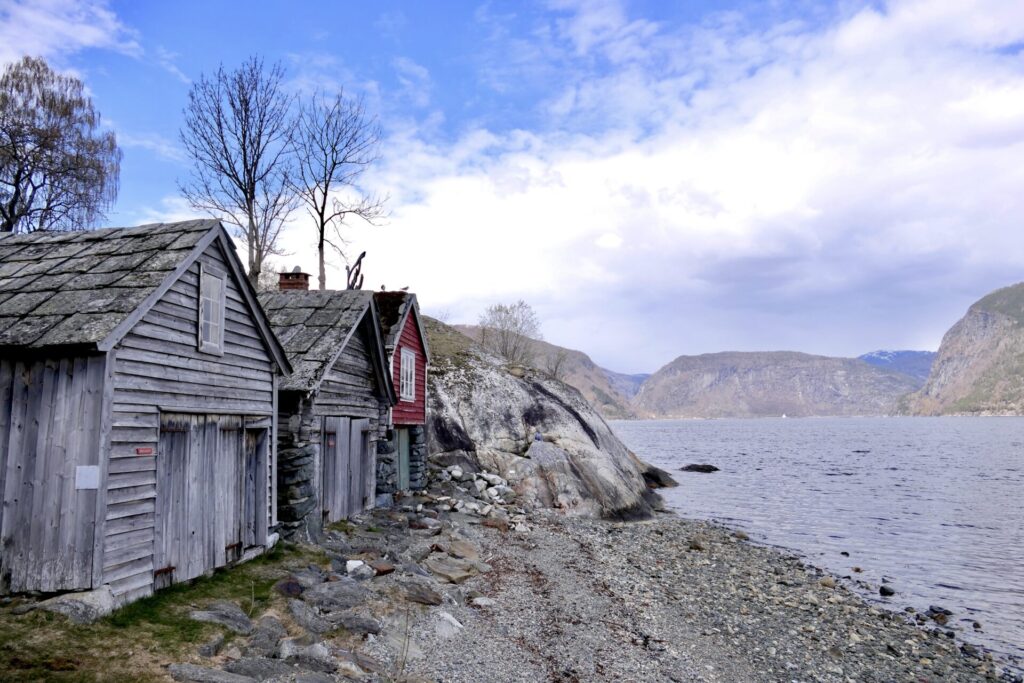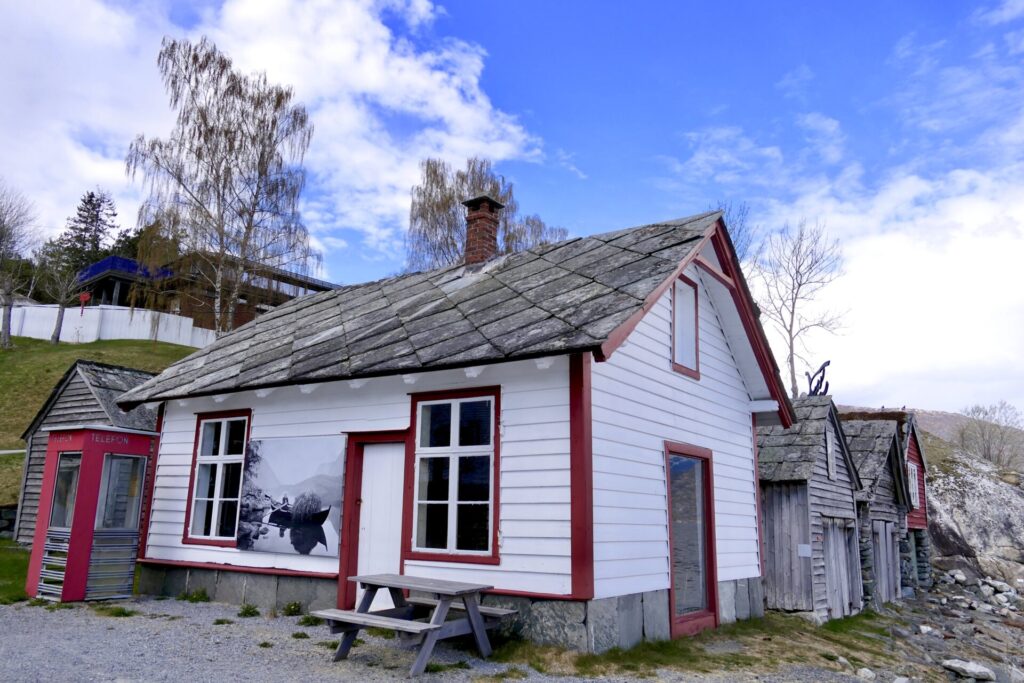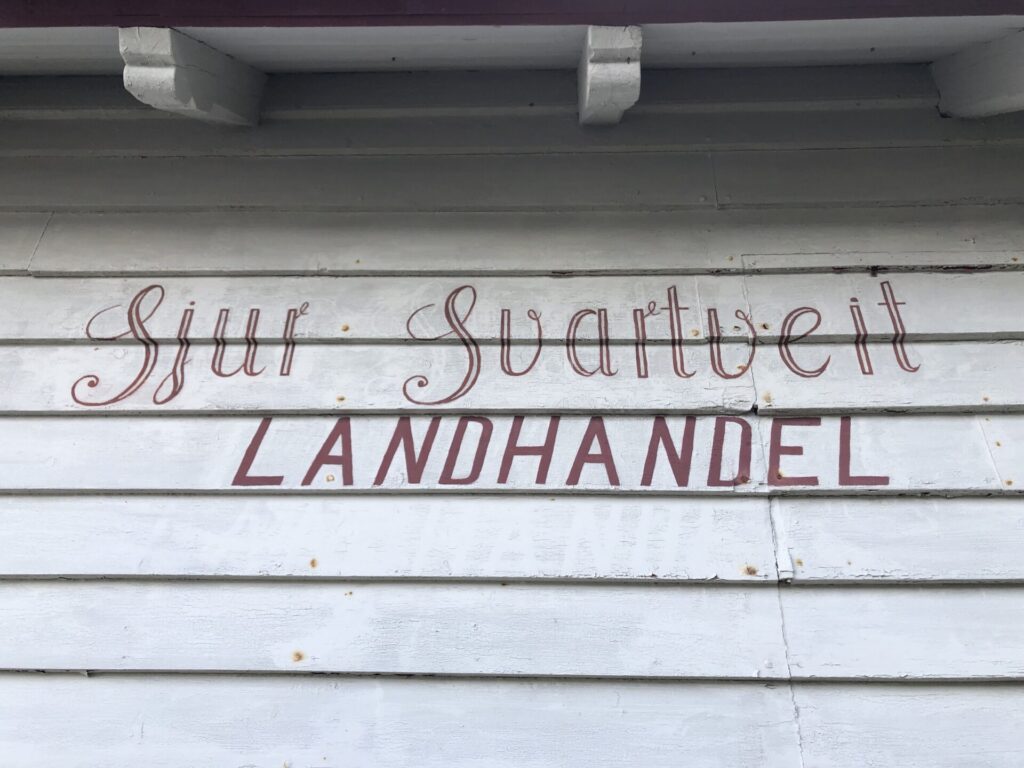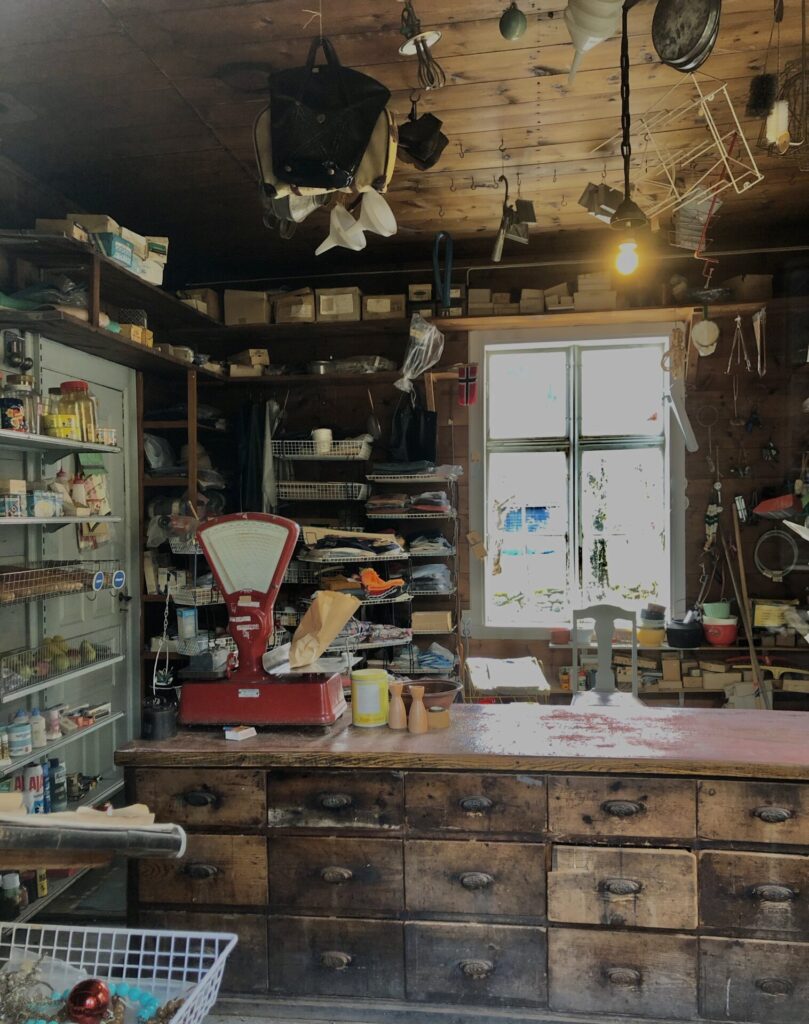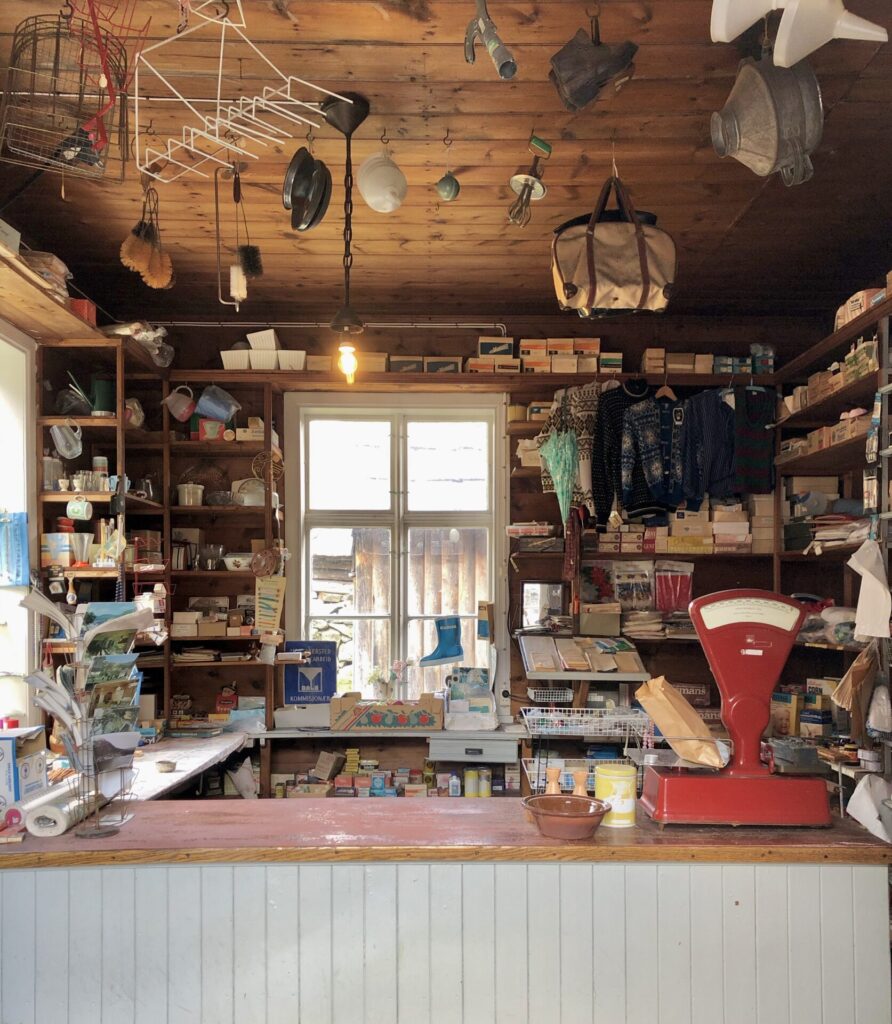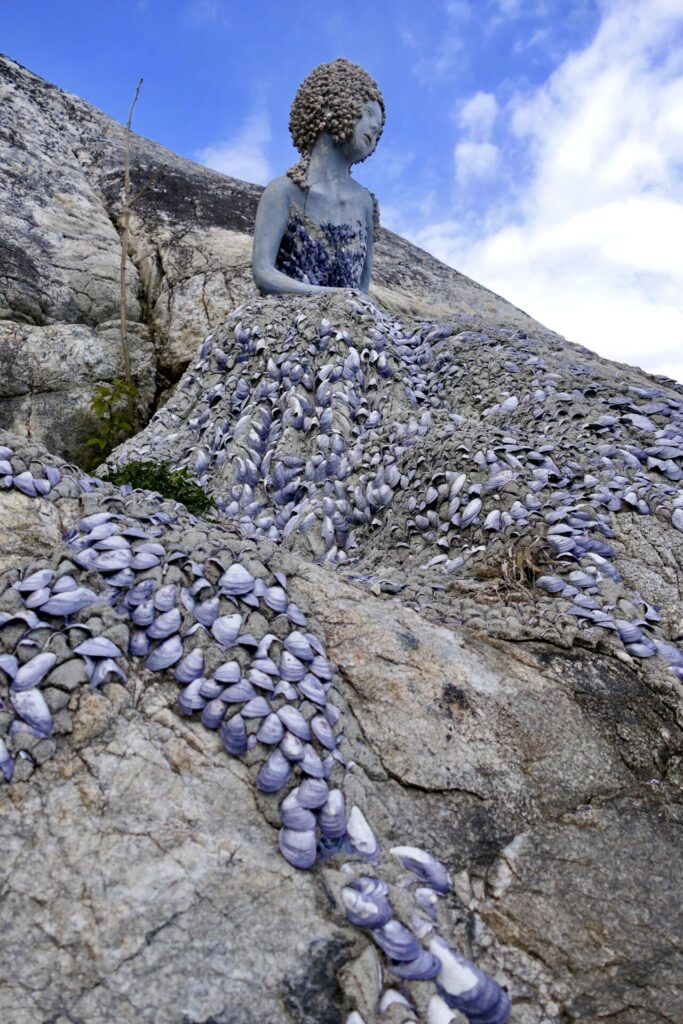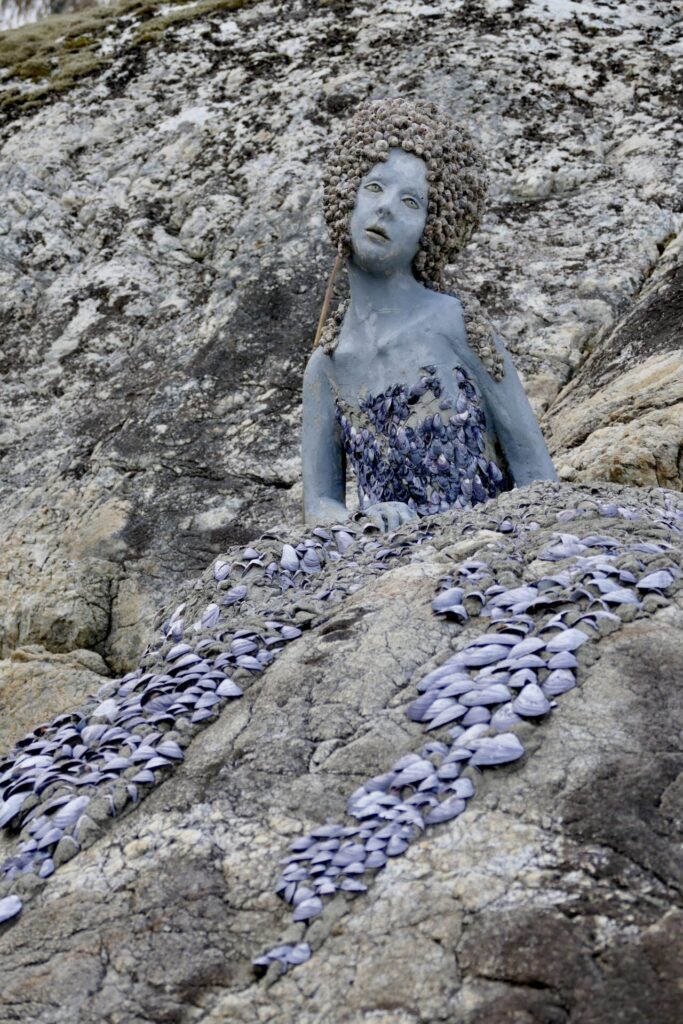
JONDAL – UTNE
This scenic route part 3 include the stretch from Jondal to Utne, a distance of 36 km. It follows the road Rv550 along the eastern shore of Hardanger-fjorden.
This part takes you to idyllic fjord villages and lush hillsides, historic hotels and a detour to a glacier, old farmsteads and a Folk Museum! Also, this section has access to some nice and modern recreational areas.
Main stops:
Jondal
Viketunet – Old Farmstead
Svåsand
Hereiane
Herand
Alsåker
Lothe
Hesthamar
Utne
JONDAL
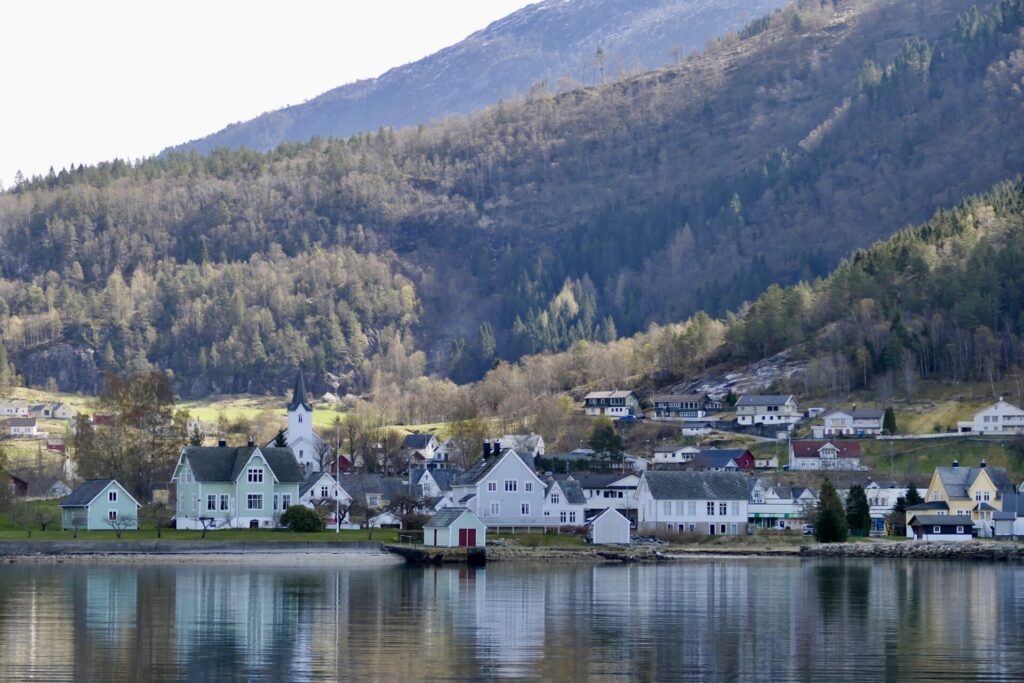
I came to Jondal by ferry from Tørviksbygd. The crossing takes about 20 minutes, and there are about 18 daily departures.
If you are coming from Odda, you can drive through the Jondal- and Folgefonn tunnel. If you want to take the route in the opposite direction starting in Utne, you can travel along Sørfjorden from Odda or by ferry to Utne from Kvanndal or Kinsarvik.
The village of Jondal is idyllically located between mountains, a glacier and the fjord. Jondal was a municipality until 2020 as it was merged with Odda and Ullensvang into the municipality of Ullensvang.
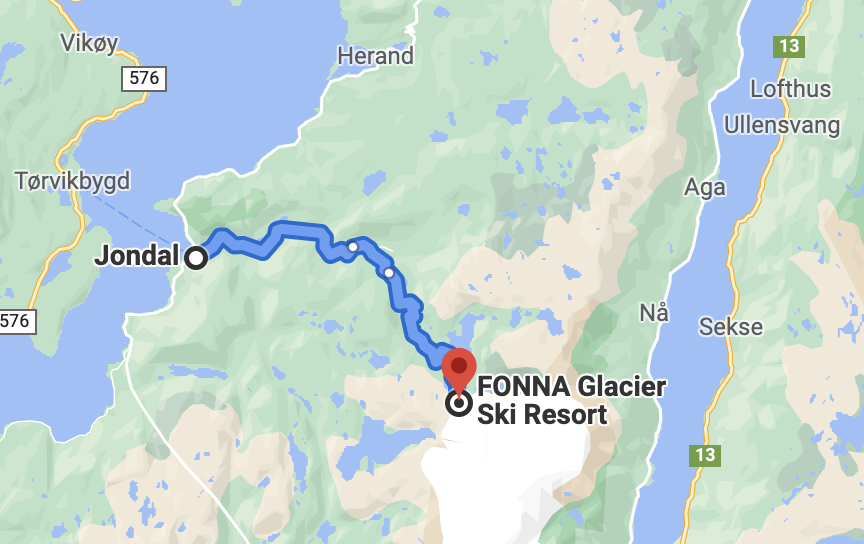
Juklevassbreen glacier – the northern part of the large Folgefonna glacier, is located 19 km from the village. The road Fv105 takes you straight up to the glacier, and it is a scenic drive that I recommend. This is the closest you get to the glacier by car!
I did this drive many years ago – not this year. It is a great experience which I soon will repeat.
At Folgefonna (1200 masl), you will find Fonna Glacier Ski Resort – a summer ski centre with activities like alpine skiing and freestyle, cross country skiing and snowshoe hiking. From the top of the ski lift, there are impressive views over the Hardangerfjord, the glacier and the North Sea.
It is also possible to have a guided glacier hike which Folgefonni Glacier Team offers.
BUILDINGS

In the heart of Jondal is the charming little hotel Jondal Hotel & Gjestgjevarstad, an old building from 1853.
Up the hill from the hotel, you will find Jondal church. The white, wooden long-church, is founded in 1888 and seats about 500 people. That makes it the largest church in Hardanger, leading it sometimes to be called the Hardanger Cathedral.
The centre of Jondal also has many Swiss-style buildings with stone roofing.
The “Youth House” was built in a monumental style in 1933. It was built for The Youth Movement, erected as a communal effort by the association members.
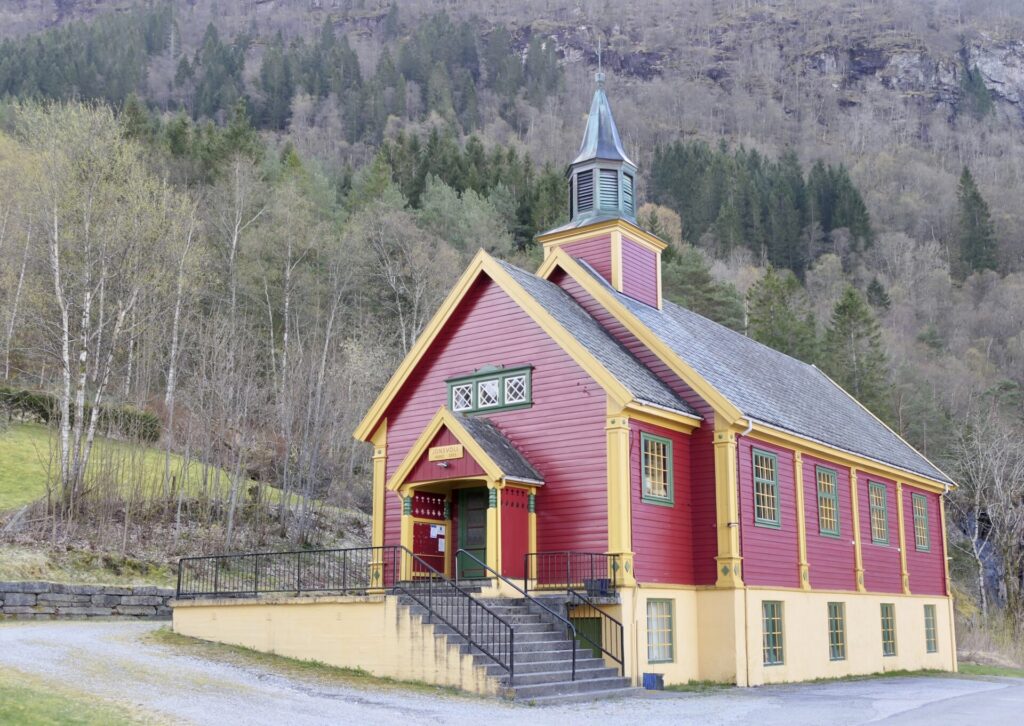
VIKETUNET – OLD FARMSTEAD
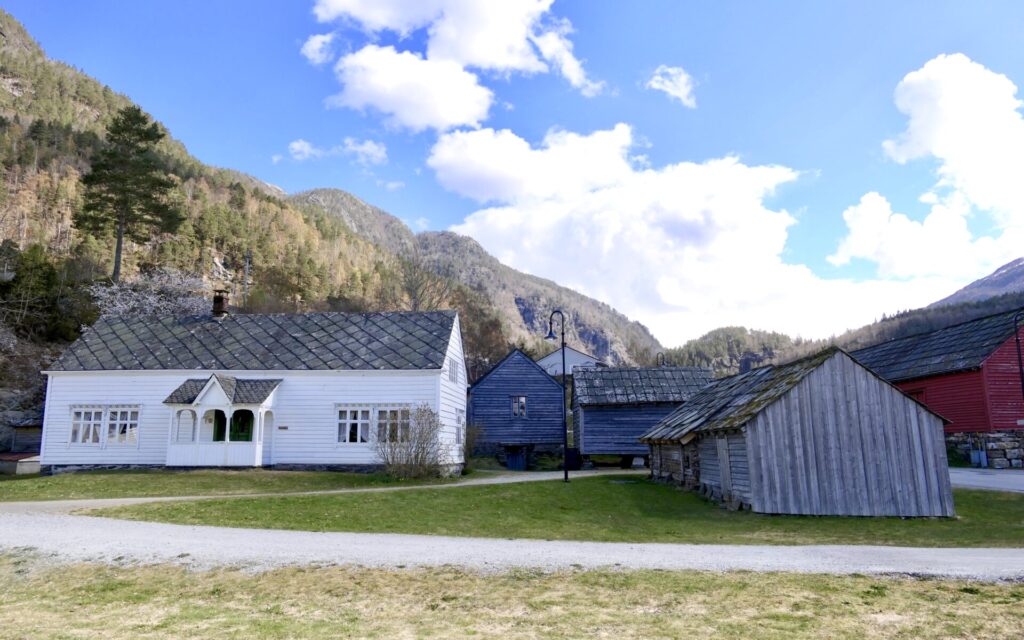
Close to the centre of Jondal, east of the river Jondsalselvi is the old farmstead Viketunet. Vik was one of the largest settled farms in Jondal and the earliest with eight buildings from the 1700s-1800s, the oldest from around 1611.
The farm was the headquarter for the local sheriff, and for generations, there have been law representatives on Viketunet. The last sheriff was Nils Sjursen Vik. He was the great grandfather of the last residents who lived at the farm until the mid-1900s.
- Residence – built 1700, the sheriff´s office. Several restorations later
- Chicken coop – outhouse, built 1700
- Eldhus – smoke house, built 1700
- Vetlaløe – the small barn, built 1700
- Stabbur – house for storing food, built 1700-1800. Added slate on roof 1907
- Verkstad – workshop, built 1860
- Løa – barn, built 1863. Annexed in 1912
- Årestova, built 1611
- Vedkykkja – wood storage, annex to Årestova (8), built 1907
SVÅSAND – OLD BOATHOUSES
Down by the fjord at Svåsand, close to the main highway, there is a long row of boathouses, one of the well-preserved, older boathouse locations along Hardangerfjorden. The farms at Svåsand that have their boathouses here, four leading farms with origins far back in time.
HEREIANE
Among ice-scoured rocks and pine trees is the Hereiane picnic area. It has a unique service building that combines old construction techniques, such as slate, with concrete and glass in bright colours—established in 2008 as a project by National Tourist Routes.
HERAND
You will also find a nice picnic area near the quay in Herand. It has service facilities and a guest harbour.
Across from the service building, you will find Meieriet Restaurant. It started as a dairy in 1914 with butter and cheese, but in 2008 was turned into a restaurant.
Herand village is known for boatbuilding, which started long before the Viking era and continued almost to modern times.
At the end of the 19th century, Herand was one of Western Norway’s most essential boatbuilding sites. In 1890 alone, 300 new boats were launched at Herand!
Herand has a Centre of Cultural History in the village’s old schoolhouse.
It has an exhibition that takes you on a journey through 9000 years, from the end of the ice age through developments of the last century. Visitors may gain fascinating insights into the beliefs of our ancestors who created the petroglyphs, agricultural traditions, the techniques of local boatbuilders through the ages, and the importance of the water-driven sash saw.
After visiting the exhibition, you can walk the Cultural Trail within Herand Landscape Park and explore many Herand’s attractions yourself.
Among the attractions is a 9000-year-old settlement in the hillsides, unique rock carvings from the Bronze Age, along with a boathouse and burial sites from the Iron Age.
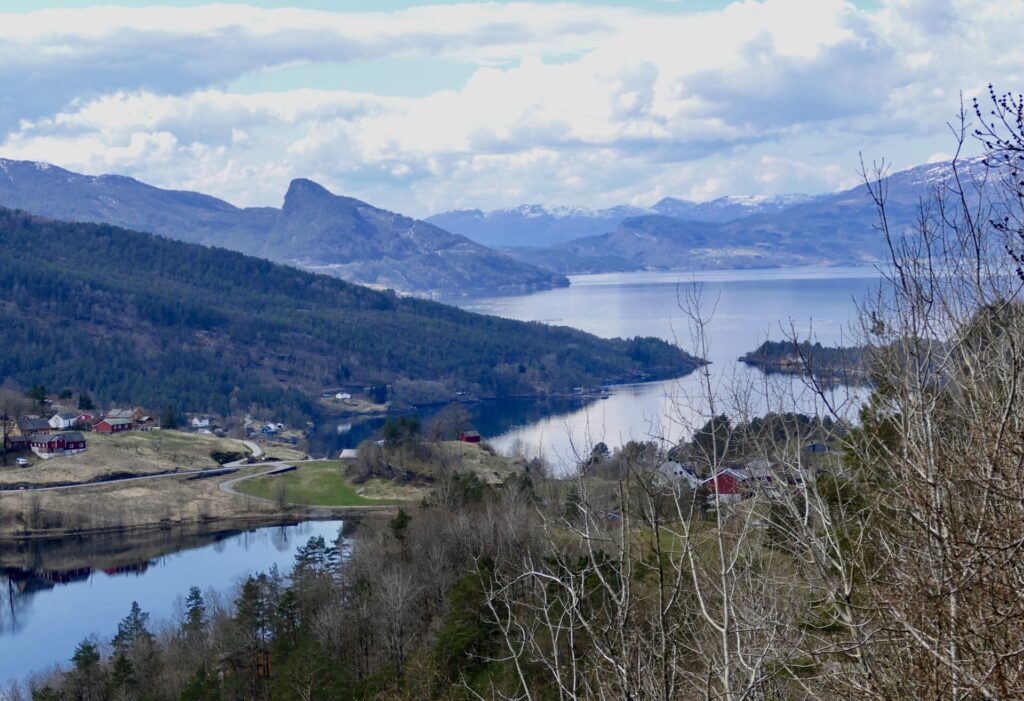
Some idyllical places along Hardangerfjorden going north on Fv550.
Kvalvik:
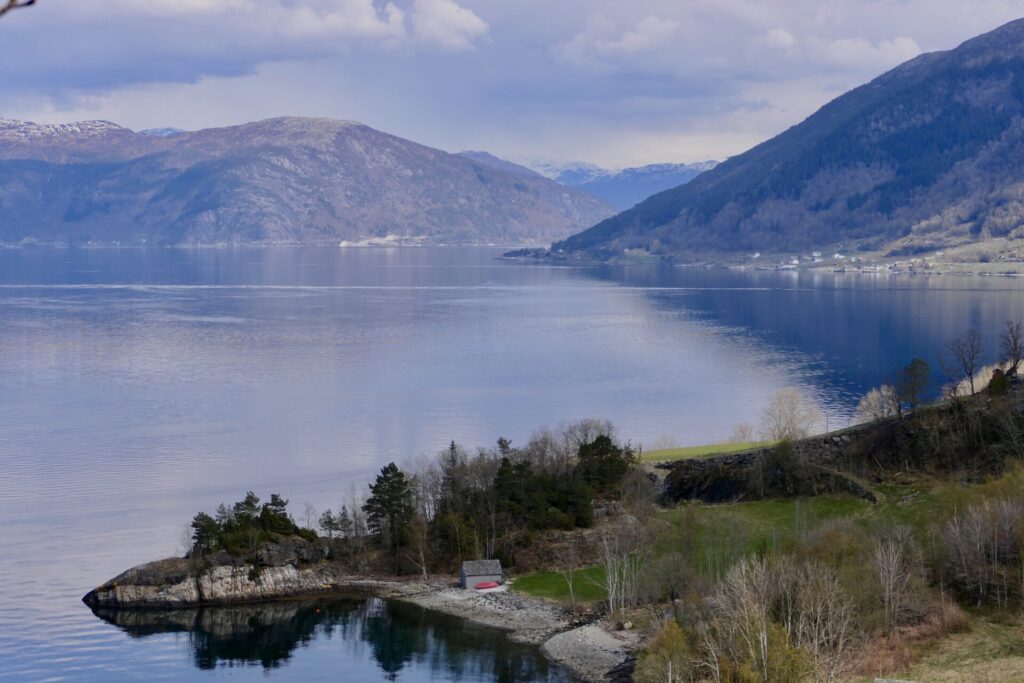
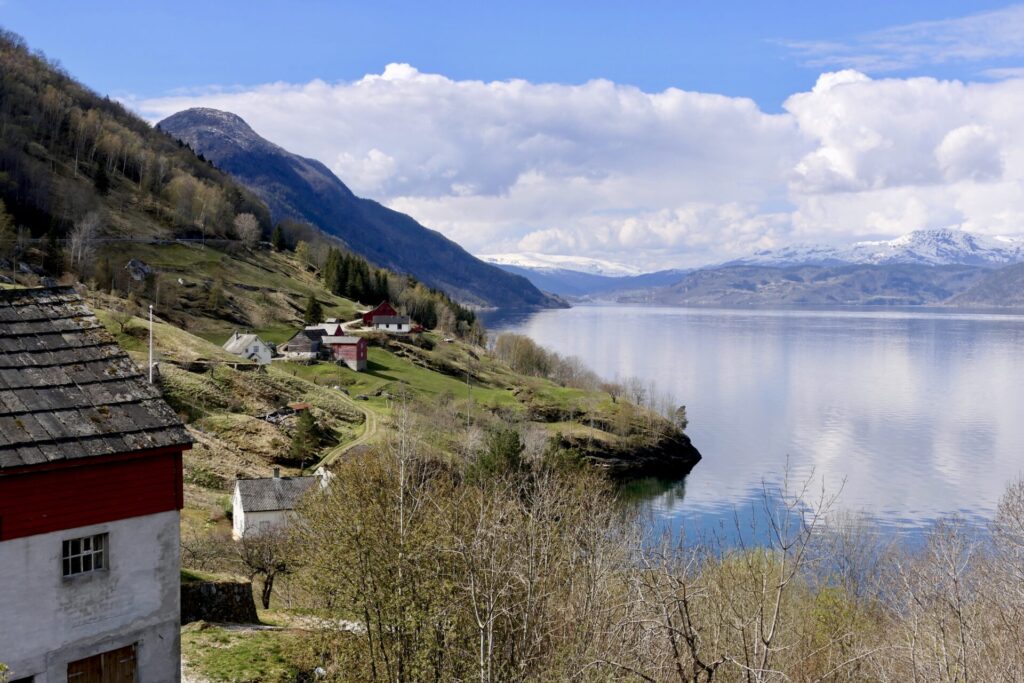
ALSÅKER
I love the scenic location of Hardanger Gjestegard, surrounded by orchards, mountains and the sea! Hardanger Gjestegard is built on a former fruit, juice and wine production company founded in 1898. The buildings were restored in the early 1990s. In 1994 Hardanger Gjestegard welcomed the first guests, and in 1997 the “Sjøbu” building was opened. Hardanger Gjestegard is today a listed cultural heritage venue for courses, meetings, parties and holidays.
We stayed here for 19 years ago – at an apartment in the boathouse “Sjøbu” – a great experience. It was my daughter first trip ever – at the age of six weeks!
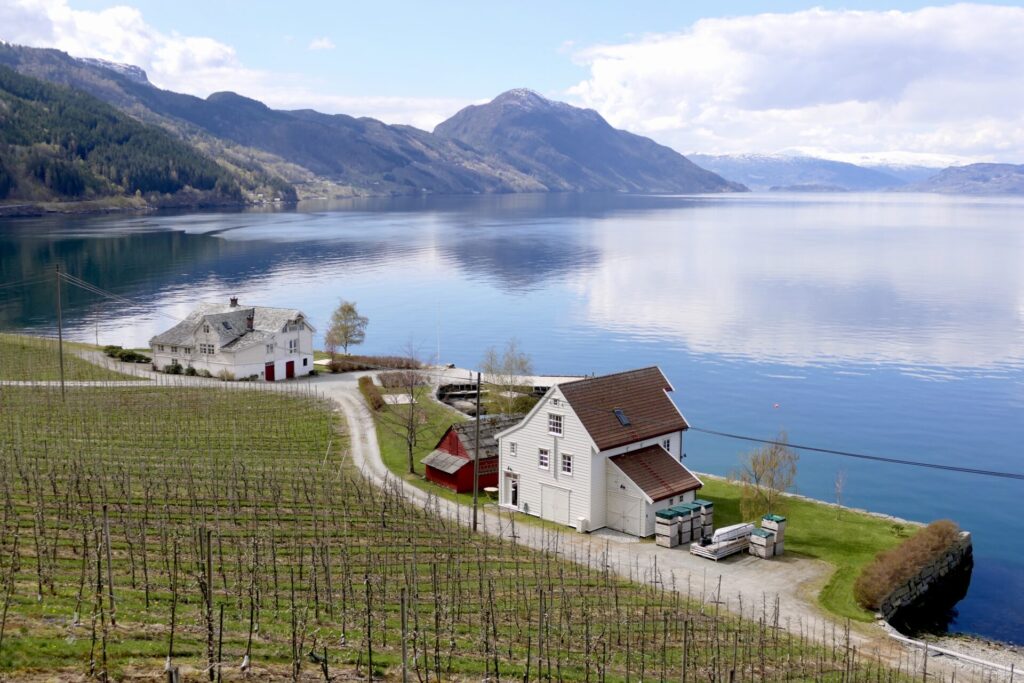
Just by the entrance to Hardanger Gjestegard, there is a small farm shop. Here you can buy apple juice and different kind of jams, even some home-knitted clothes.
LOTHE
Lothe has a camping site surrounded by orchards and an idyllic location by the fjord.
Magical moments some years back …Appletree blossoming near Lothe camping, 2006:
HESTHAMAR
Hesthamar is a few km from Utne with several fruit farms at the hillsides and idyllic coves along Hardangerfjorden.
Same motif – 15 years apart:
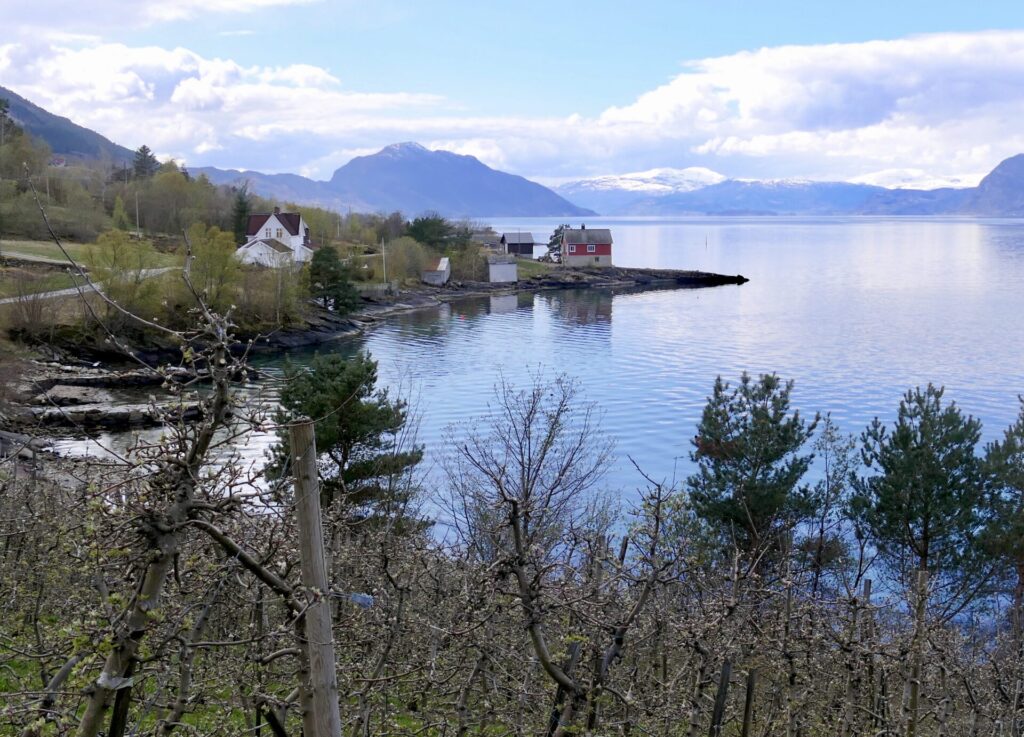
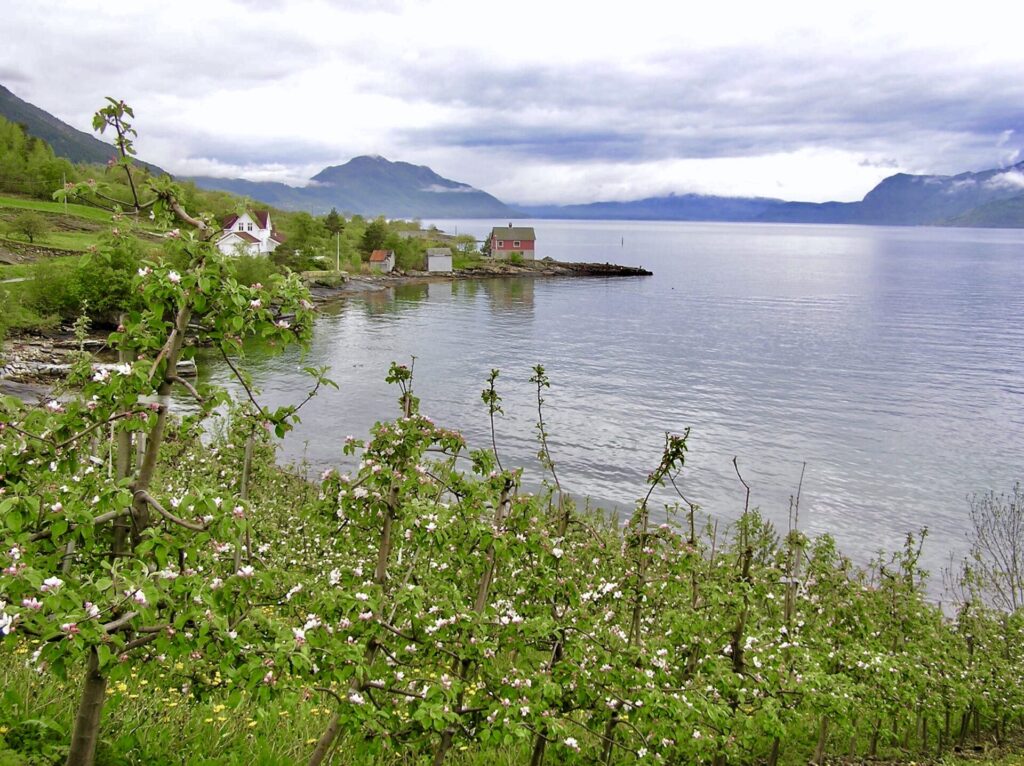
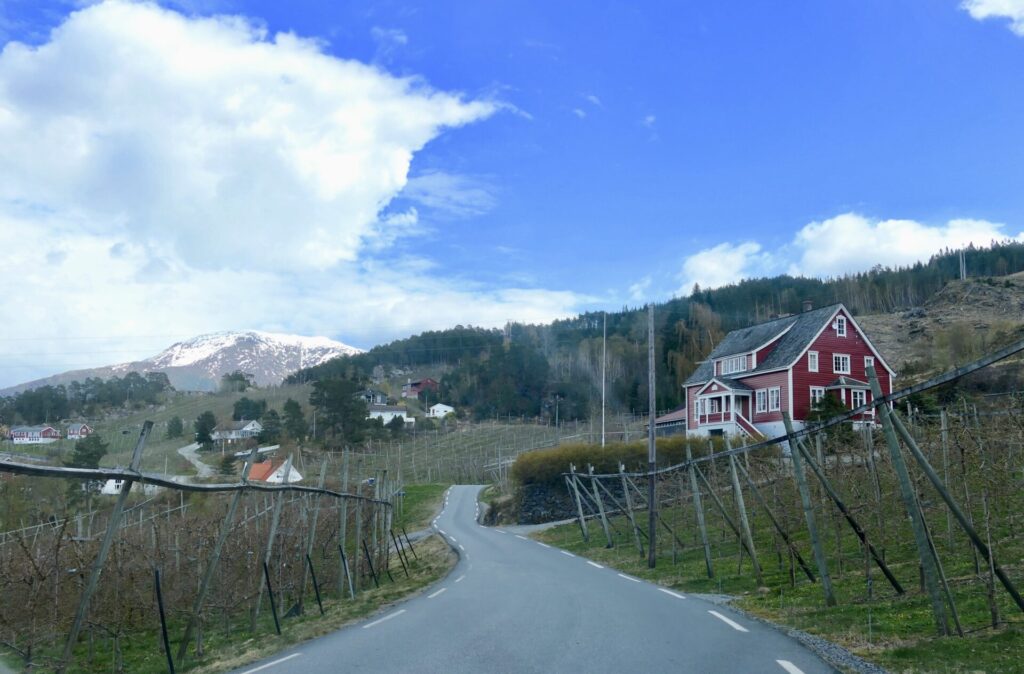
At the hilltop – Hesthamar rest area with a beautiful view
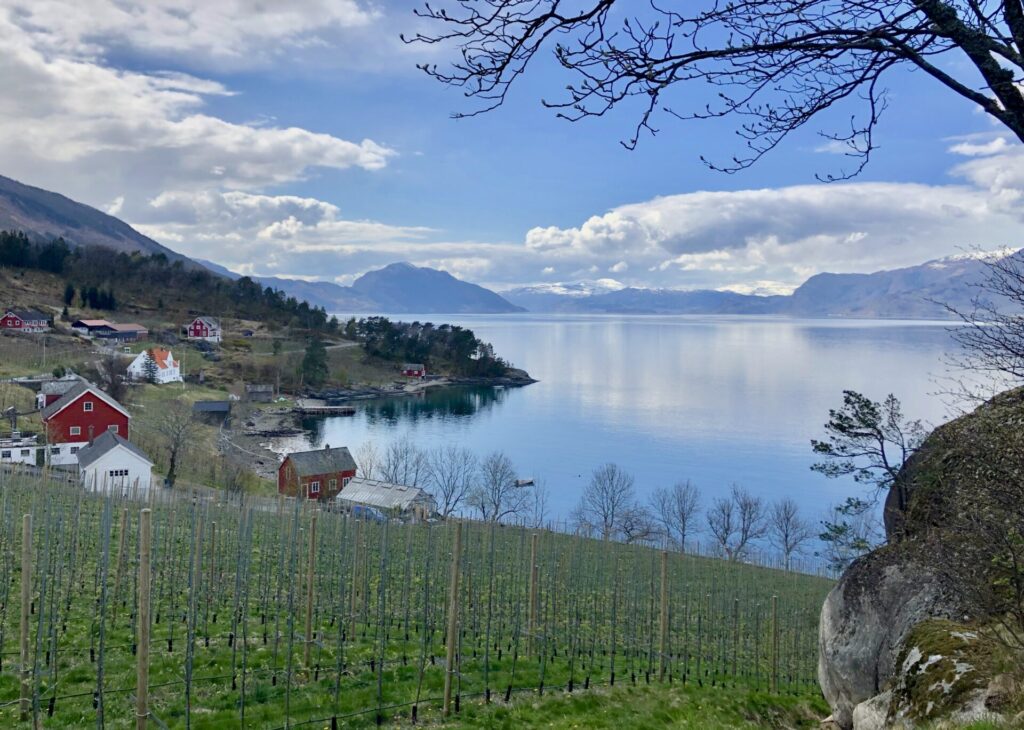
The white house to the left is the Countyclerk’ss house – one of the oldest residences for a district recorder in the country. In 1637, barely 50 years after the office of the district recorder was established in 1591, the local people bought this residence from the bailiff Lauritz Johnsen on Torsnes. From 1659 the district recorders lived here, intermittently, up to 1790.
The main building was built in 1723 for Jens Fabricius and expanded to its current design after 1733 for Johan Sechmann Fleischer. It was protected in 1923. In the 1970s, the place has retrieved some of its old statuses, meticulously restored by the Bergen philosopher Arild Haaland.
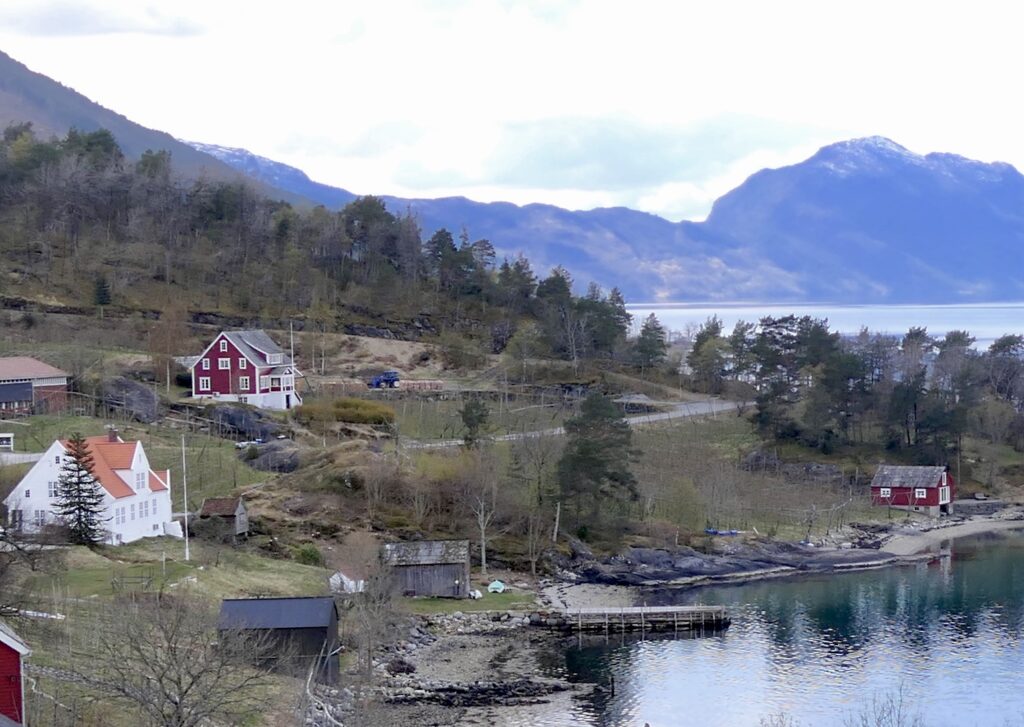
UTNE
Utne Church was easy to spot. This beautiful white painted wooden church was designed between 1892 and 1895.
Utne is a ferry port with regular ferry routes to Kvanndal and Kvanndal, connecting the two sides of the fjord.
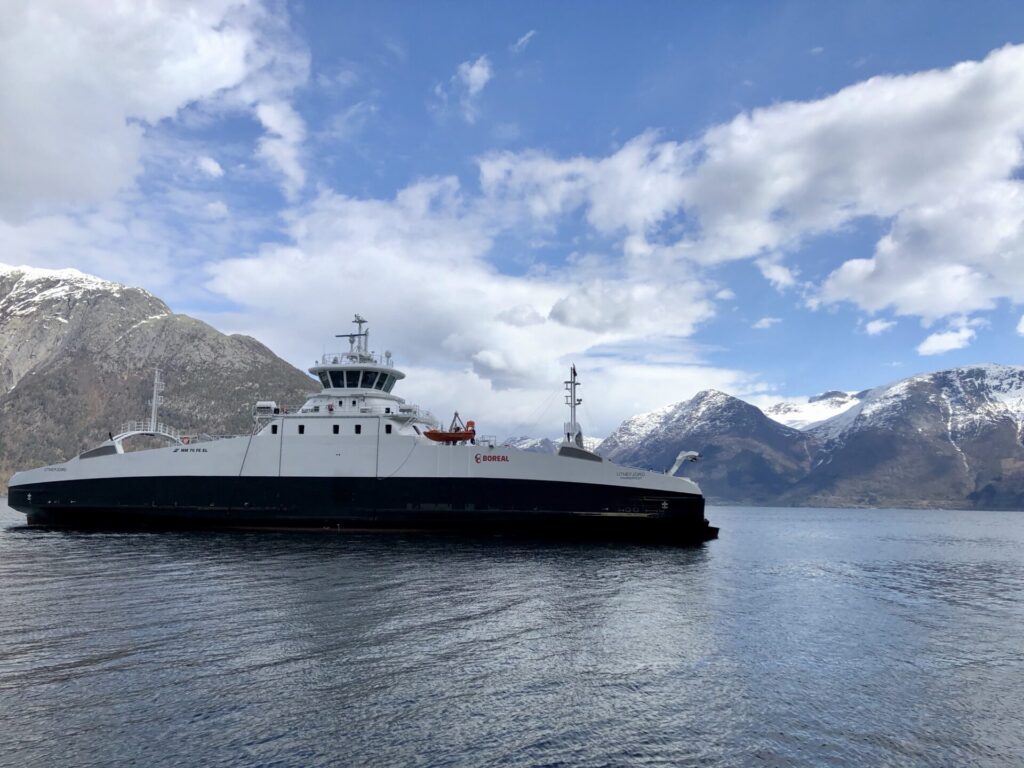
Utne Hotel is Norway’s oldest protected wooden hotel with an exterior in the Swiss architectural style. It has been in continuous operation for nearly 300 years, and it all started in 1722 as a guesthouse with a living room, kitchen and one bedroom. Utne hotel has for centuries greeted its guests with rich traditions and a warm and thoughtful attentiveness.
Utne Hotel – from a visit in May 2006. I was travelling together with my mother and daughter:
“Brochhuset” – the trading house – built 1828:
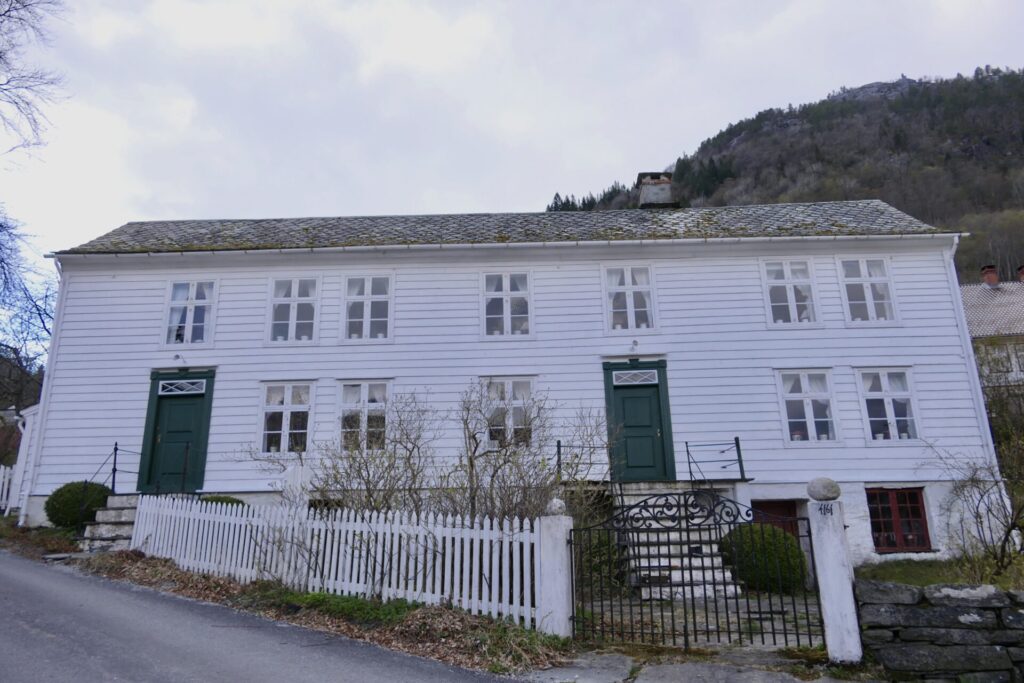
Jacob Winess built “Brochhuset” in 1828 when he took over the trading business, an exclusive right from Bergen City to trade in the area. The grand two-storied residence is a typical example of the classical empire style from the 19th century.
It was called “Jacobshuset” or “the trading place” right up to the 1900s.
From 1830 the tourist traffic increased, and in 1836 Hardanger’s first post office was opened in the building. However, “Broch-huset” (the Broch House) was still a country store throughout the 19th and 20th centuries.
In the 1980s, the building was restored, and in 2003 it was protected as a cultural heritage.
HARDANGER FOLK MUSEUM
The main focus of the Hardanger Folkmuseum is the folk costumes, national costumes and Hardanger embroidery, folk music and the Hardanger fiddle, building styles and preservation. The Hardanger and Voss Museum run the museum.
In the main building, you will find Hardanger embroidery, traditional costumes, and folk music exhibitions.
An open-air museum with historic buildings and land art is also part of the museum.
Up the hill from the museum are old traditional houses. Only two of the buildings originally stood on the property; the rest have been moved here from elsewhere in Hardanger. They are arranged to suggest a cluster farm, which was common in the 1800s.
Old boathouses are also part of the museum. Next to the boathouses is a general store that once stood on the quayside.
At some rocks beside these boathouses – the impressive art installation
” Den lille havfruen på Utne”( The little mermaid at Utne)
Artist: Essi Korv – made in connection with the project “Mellom Himmel og Fjord”.

